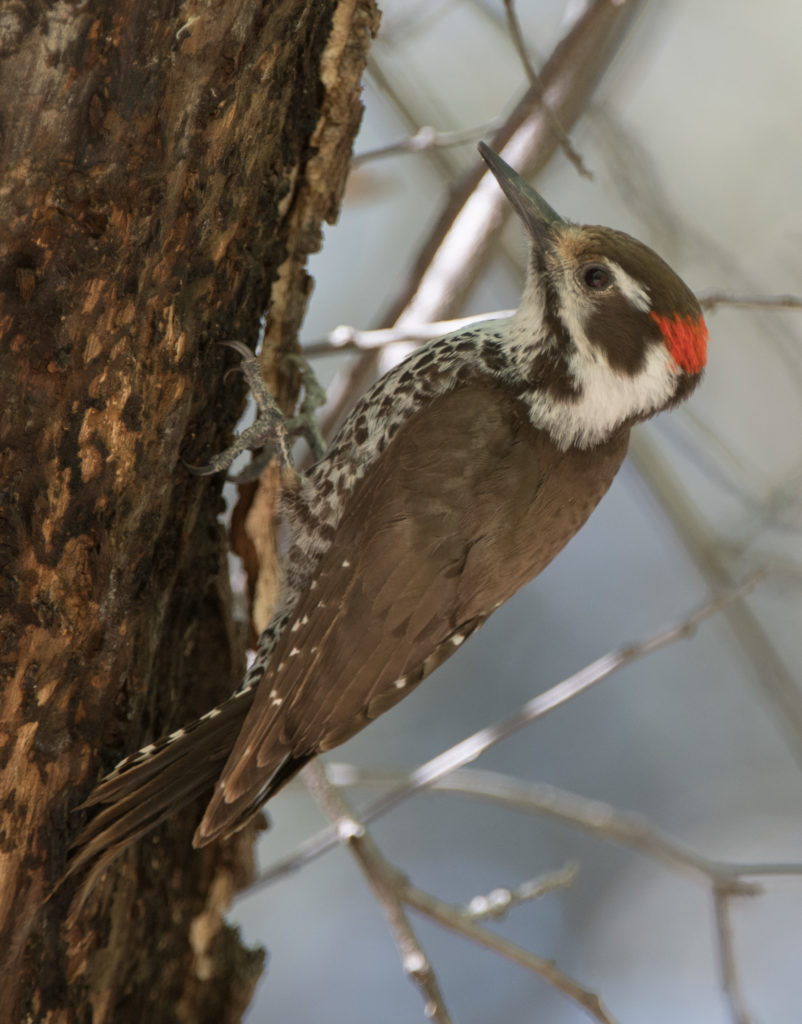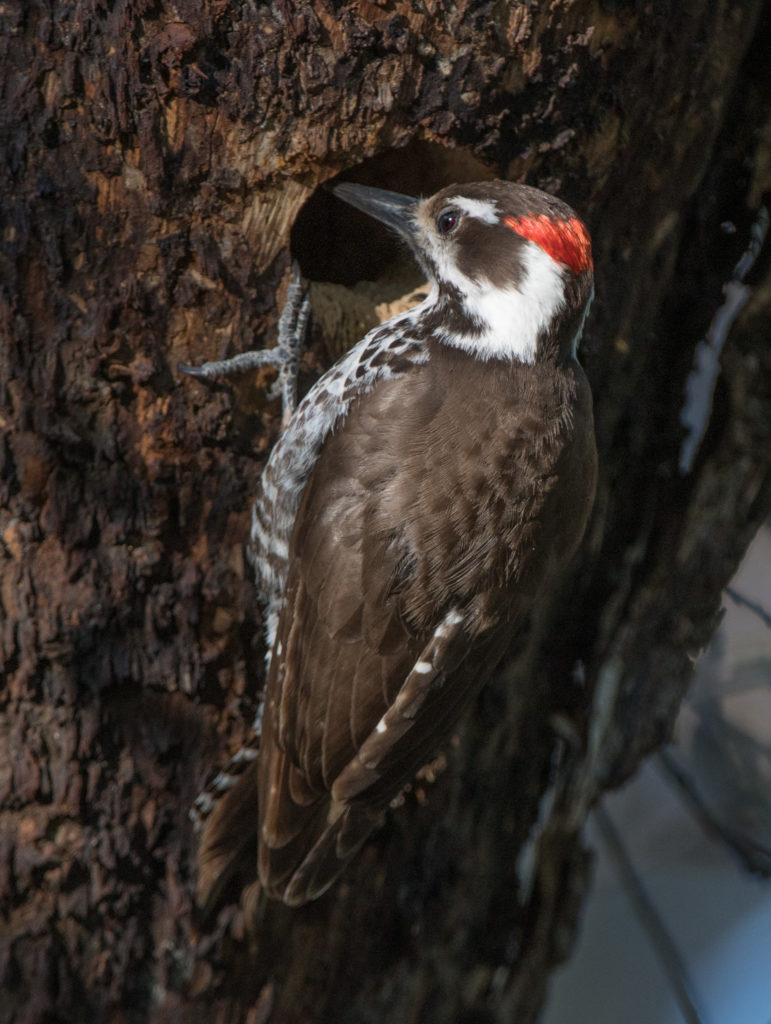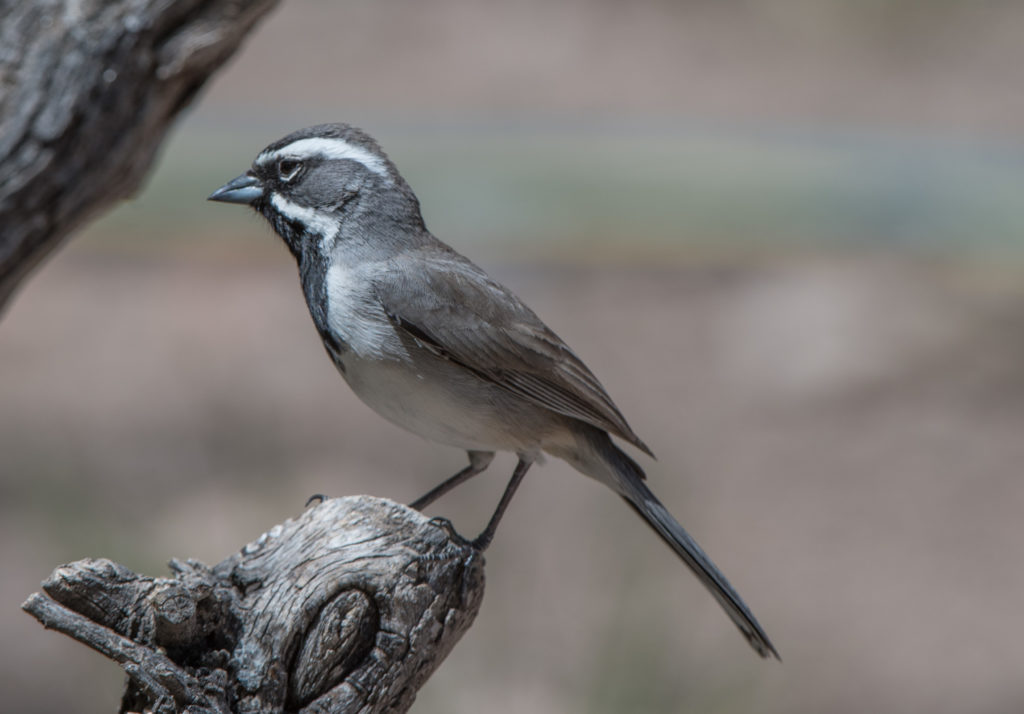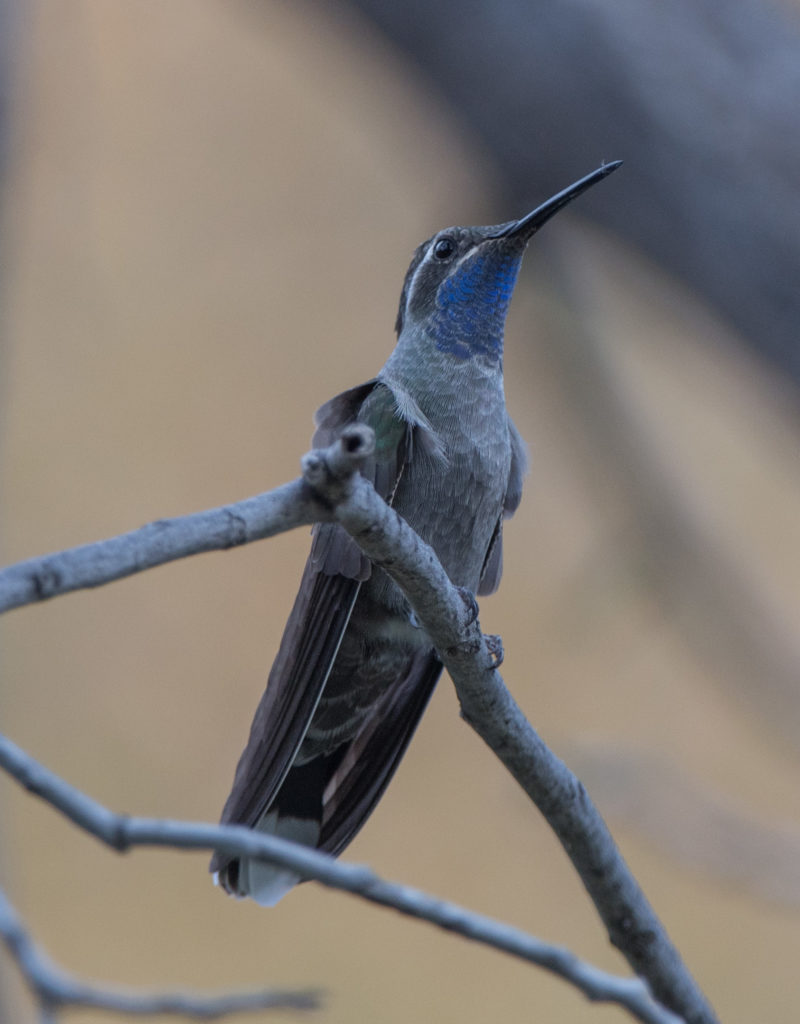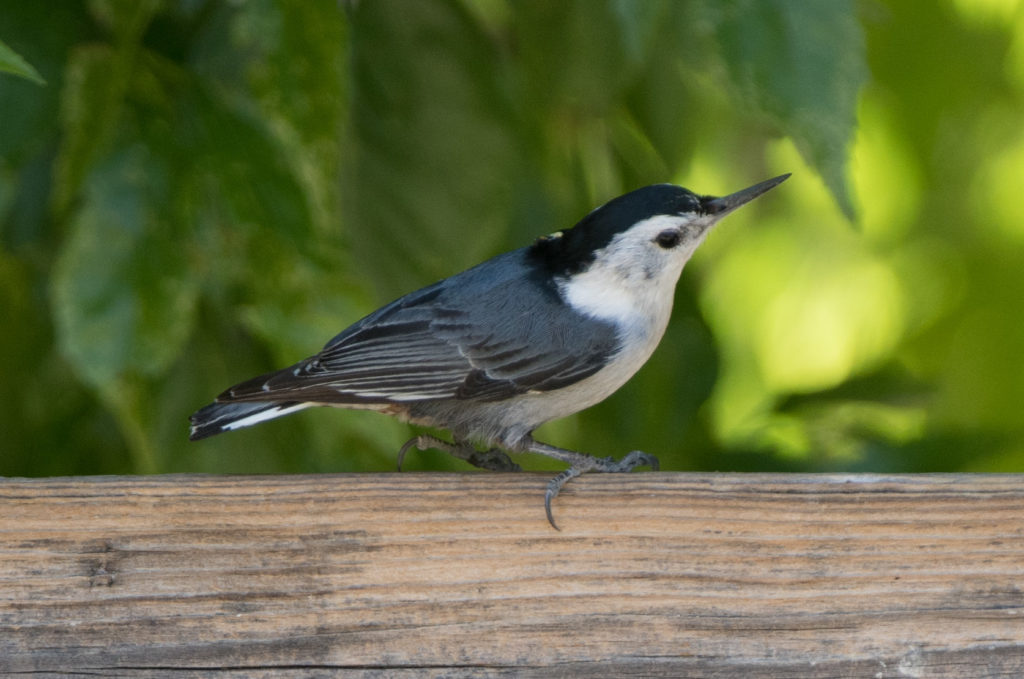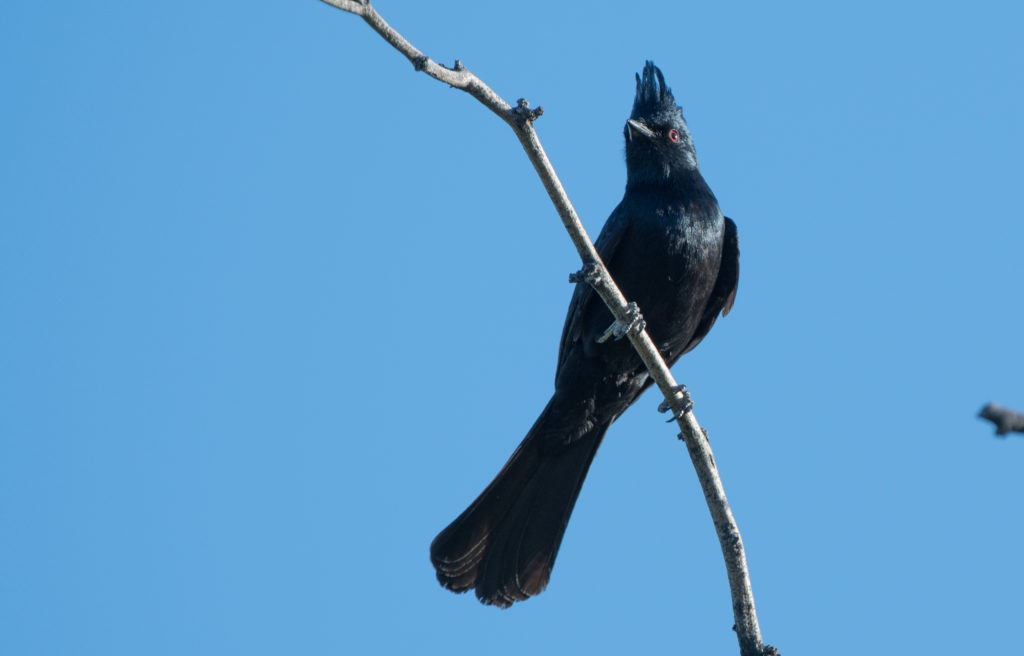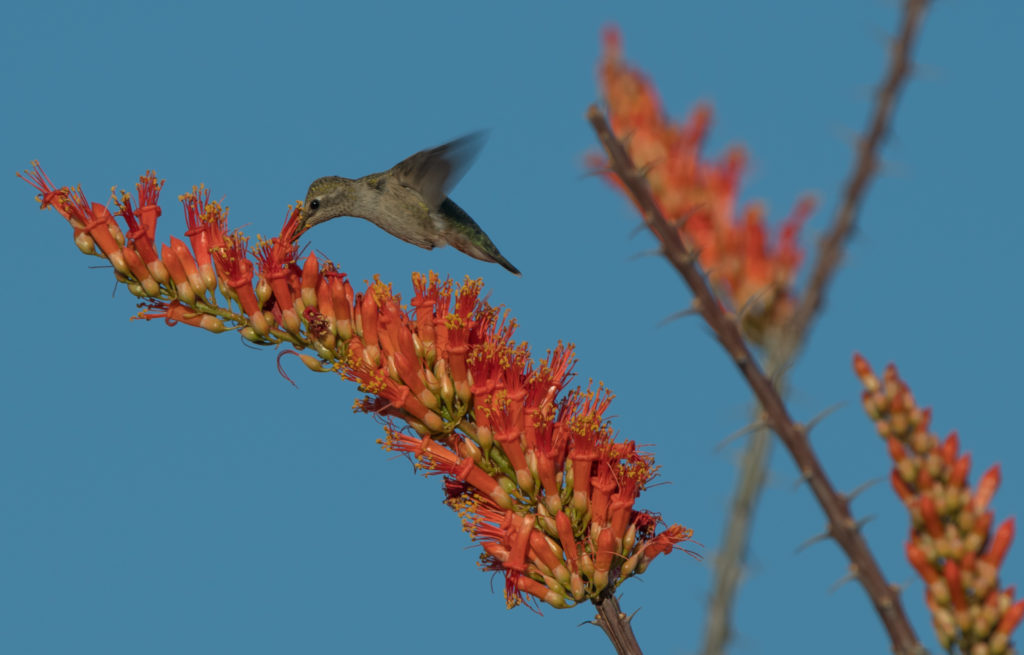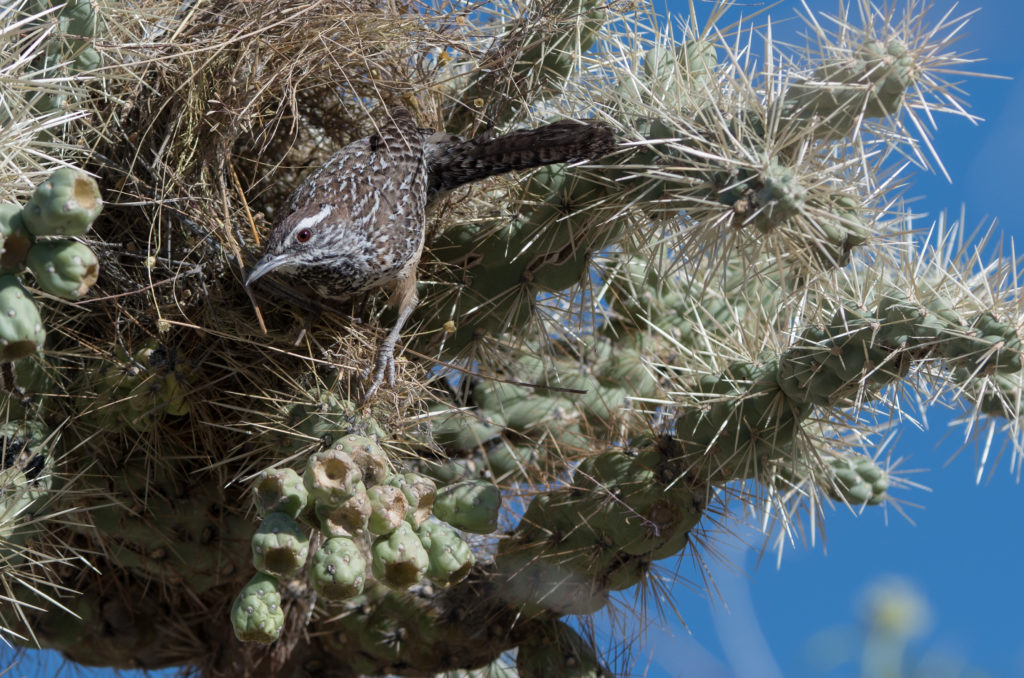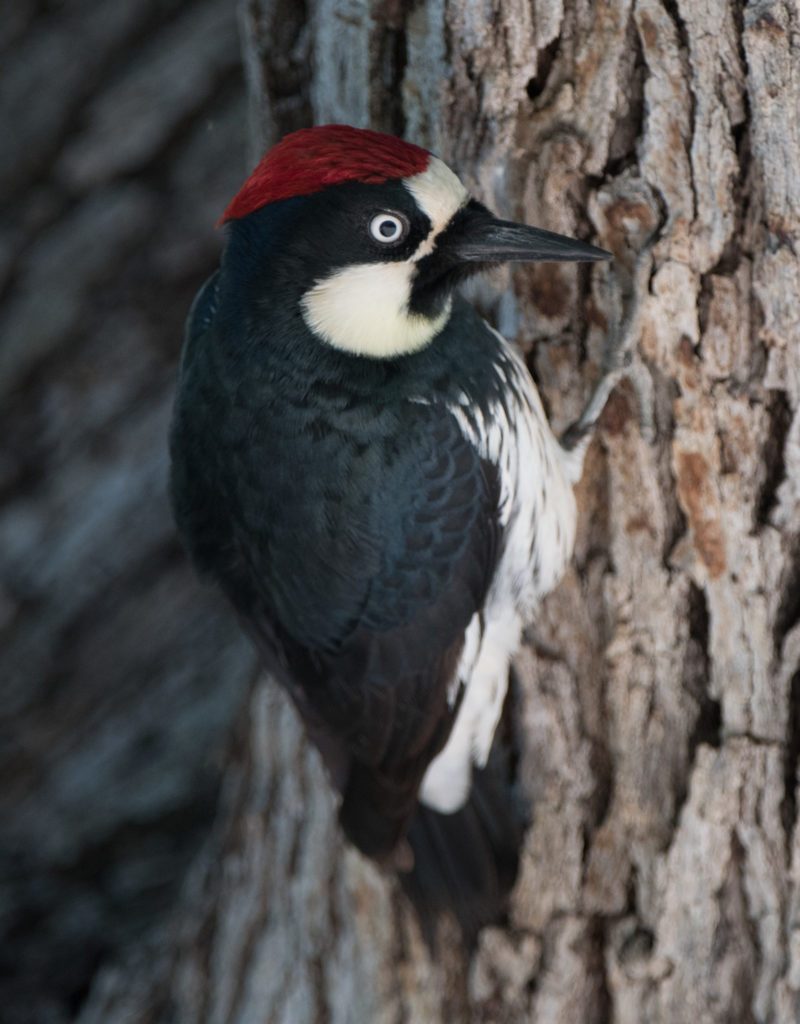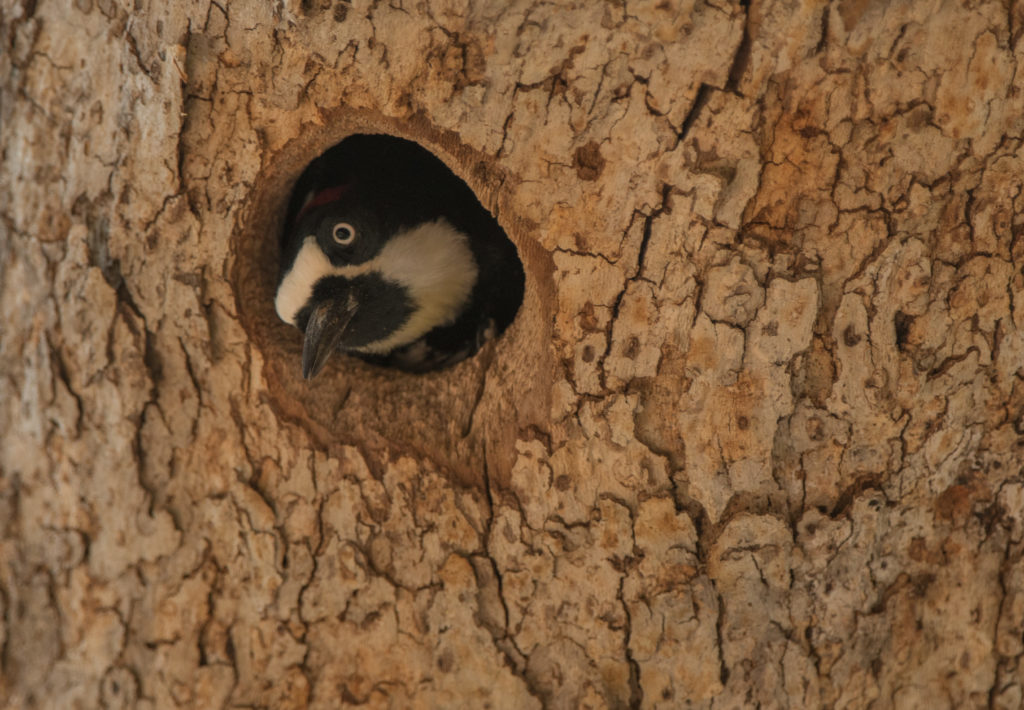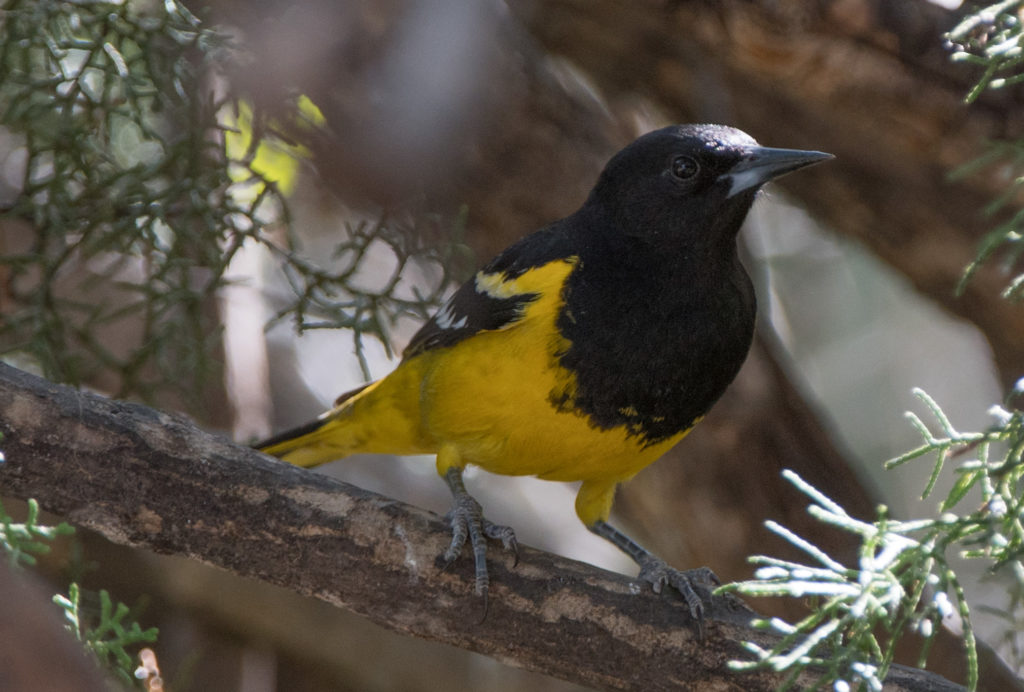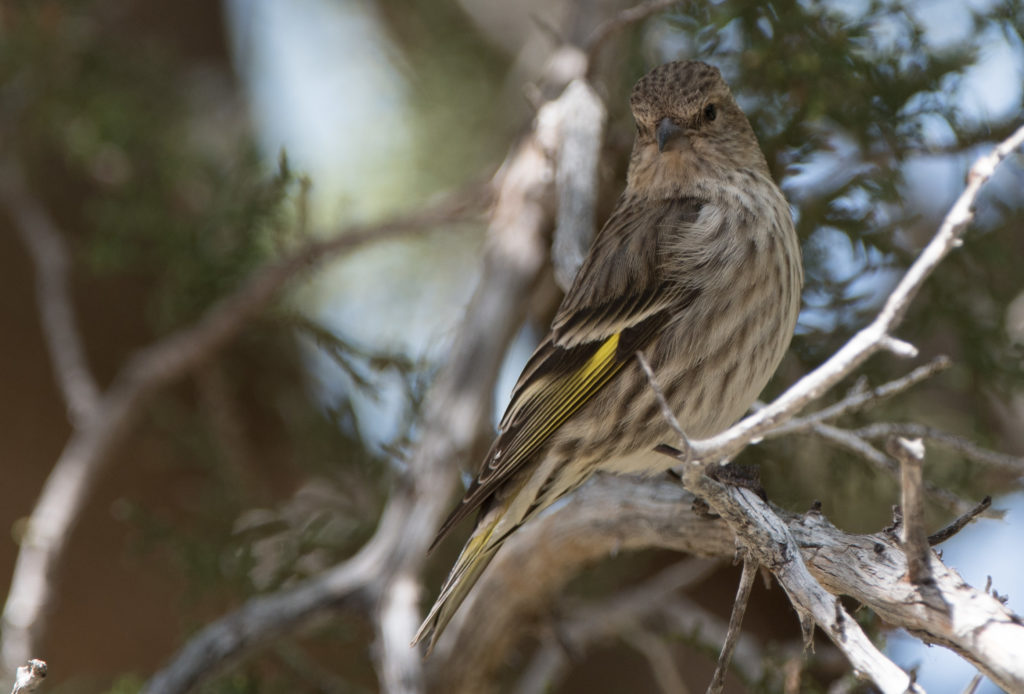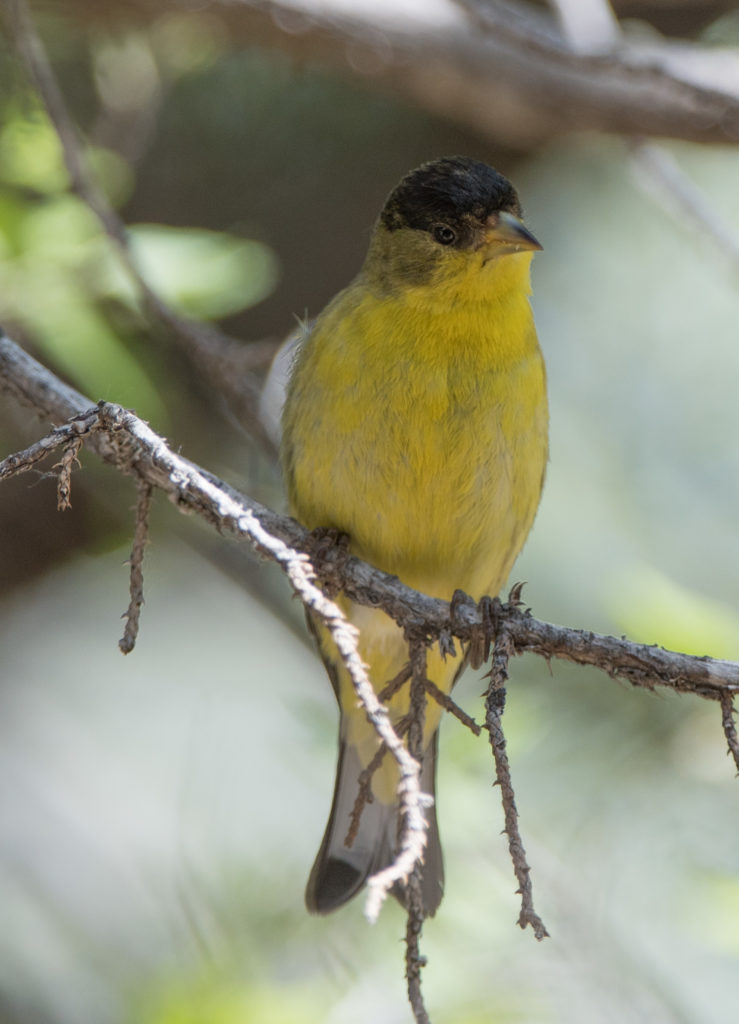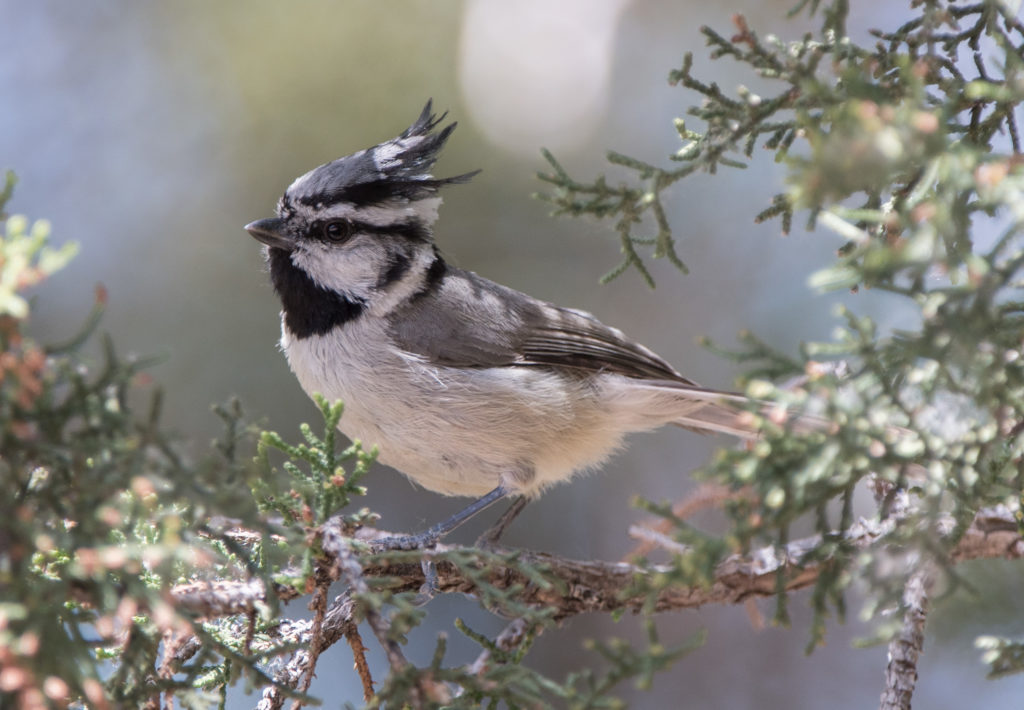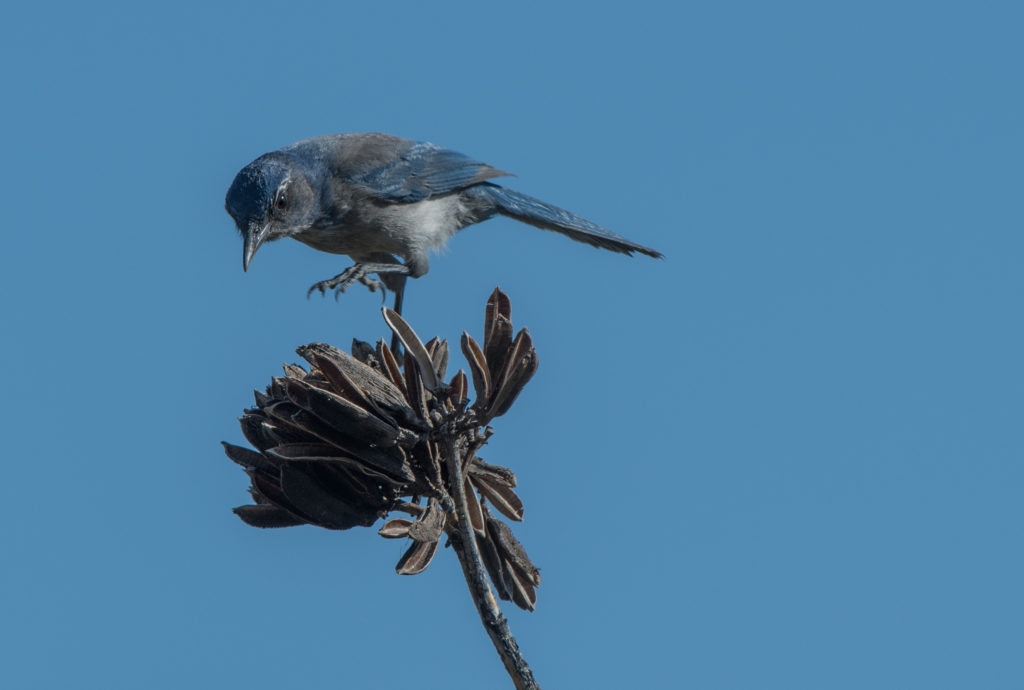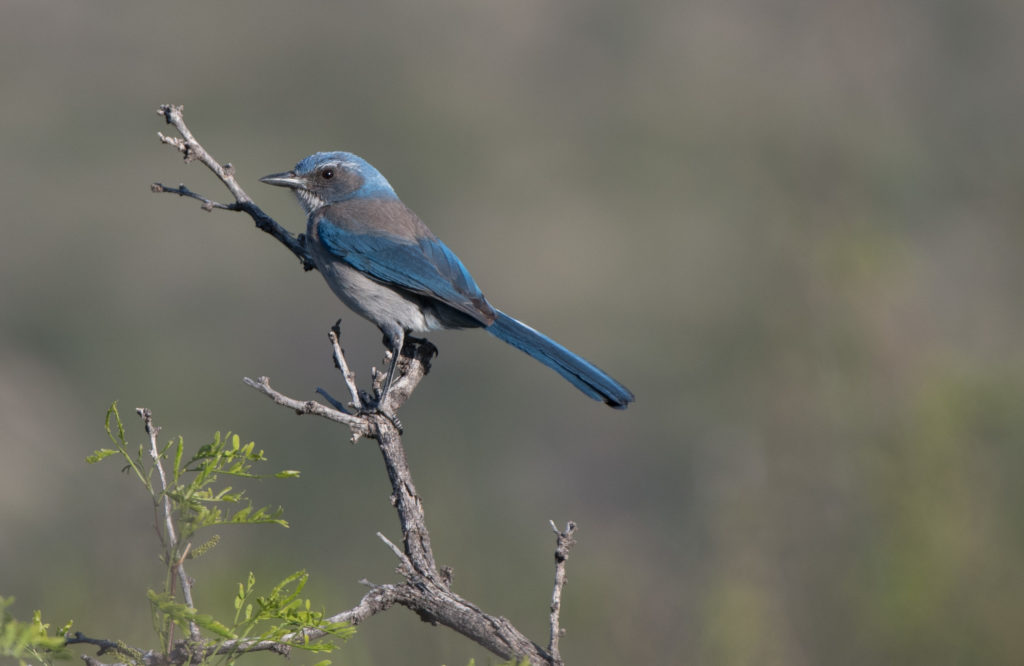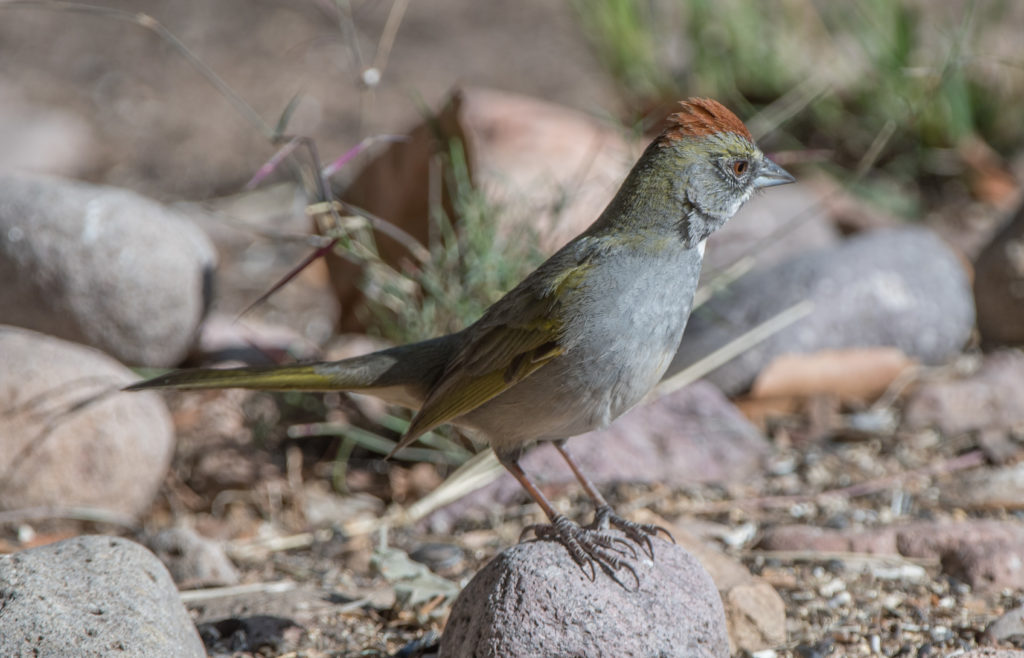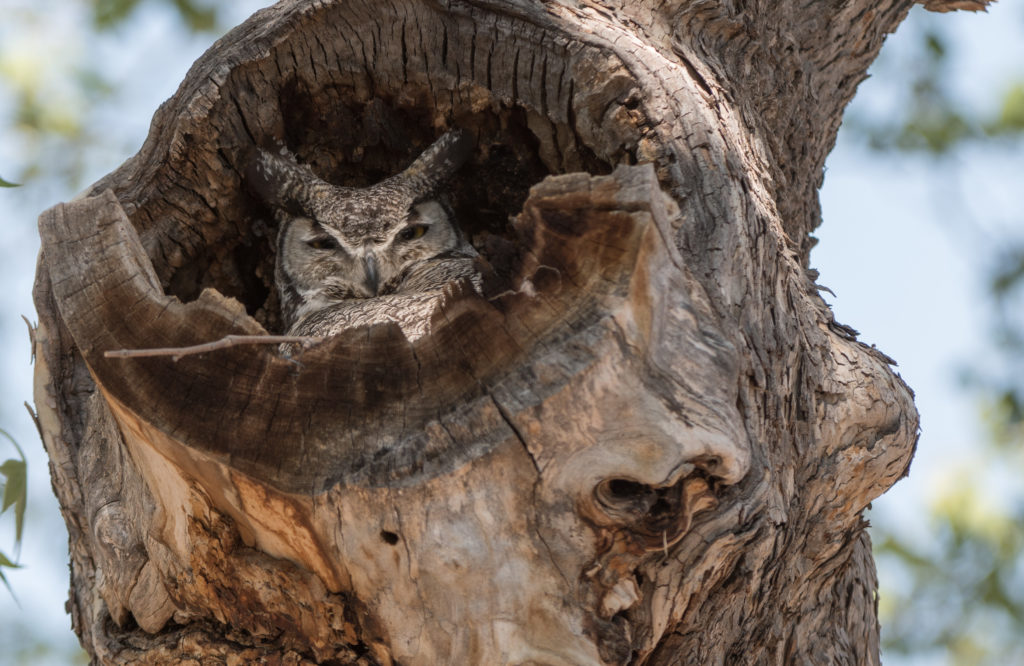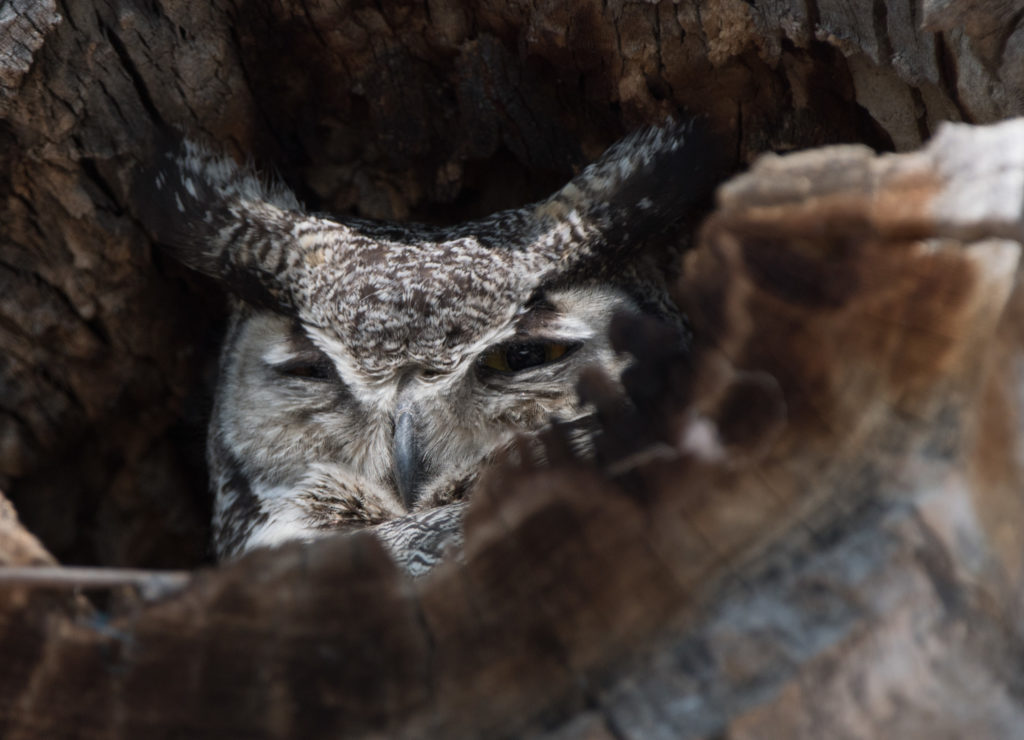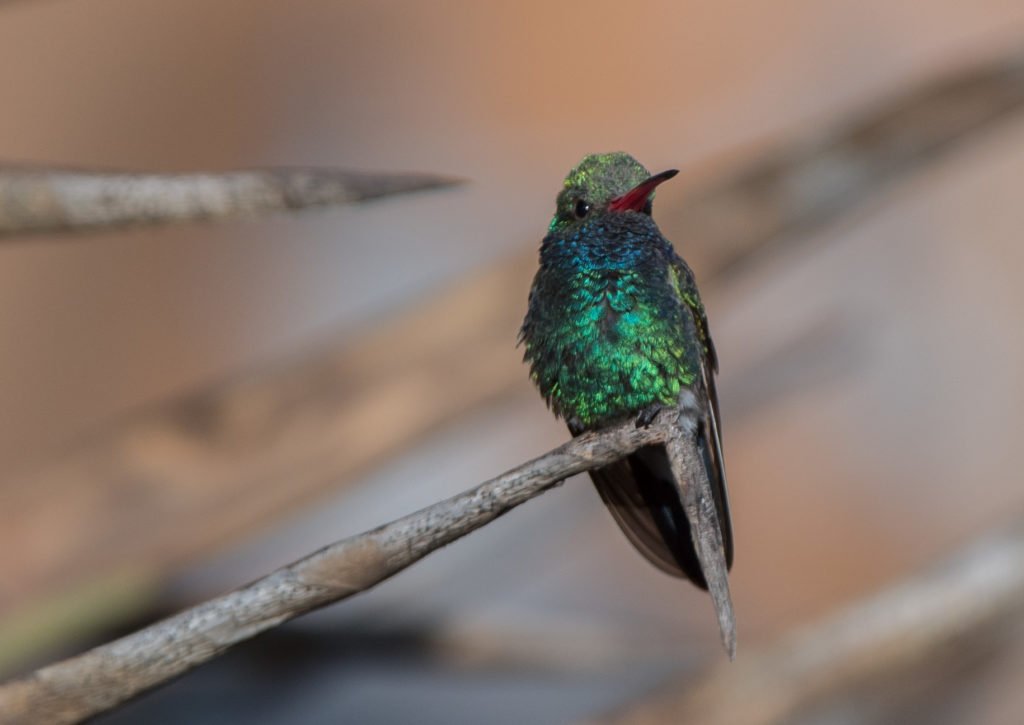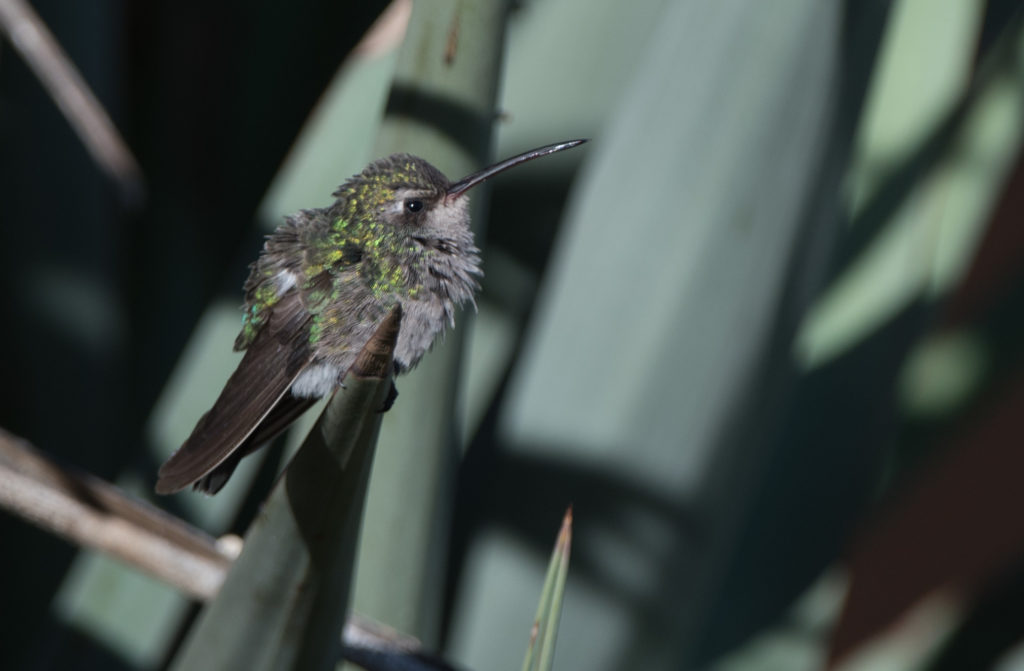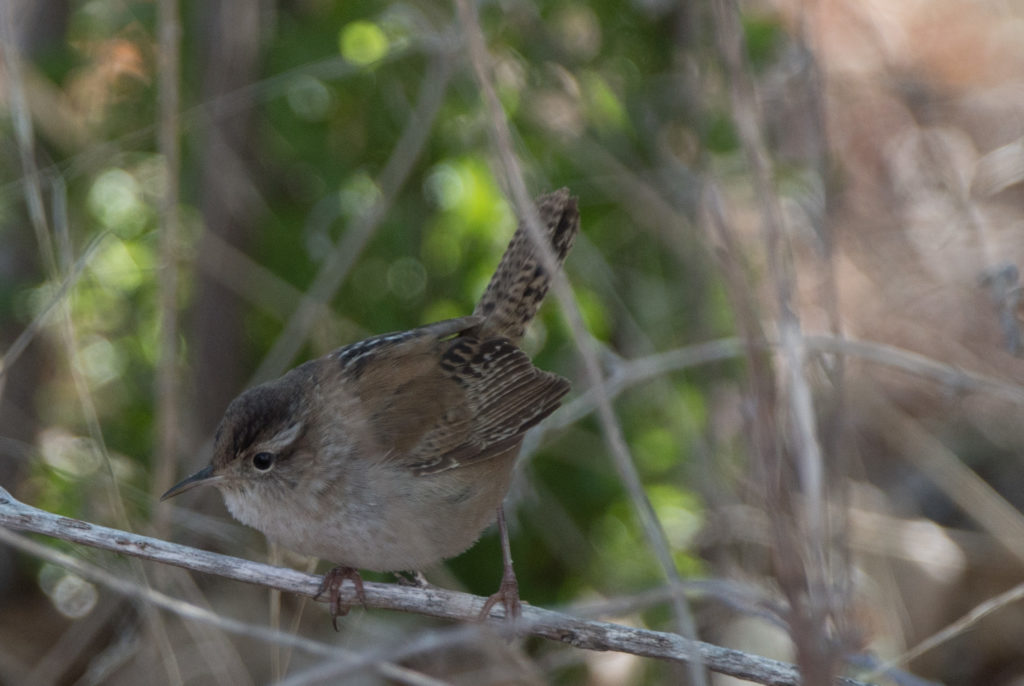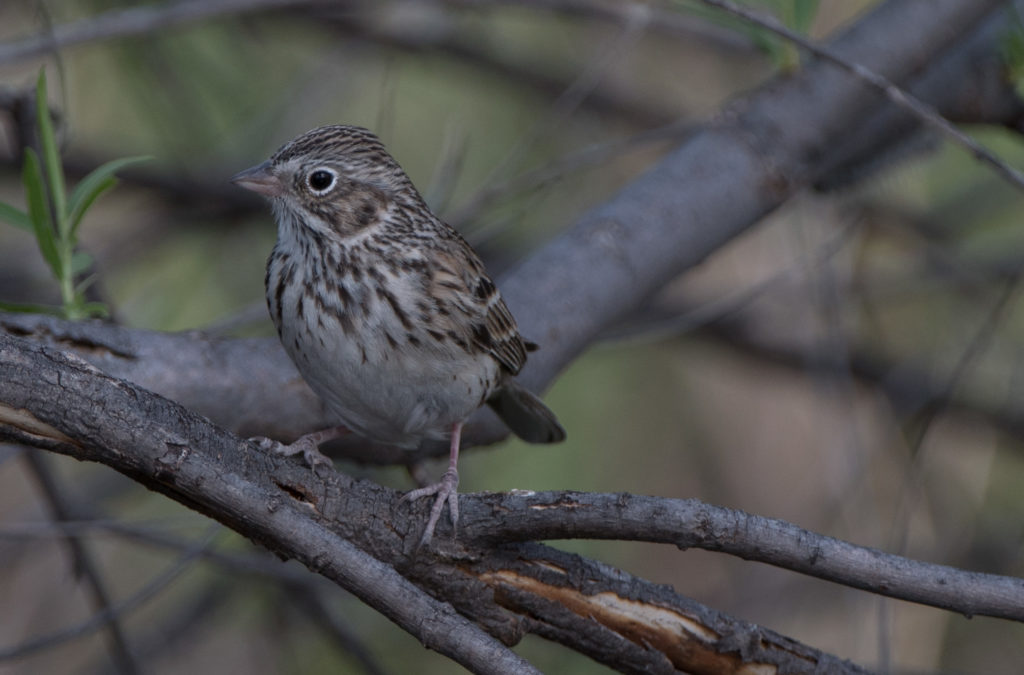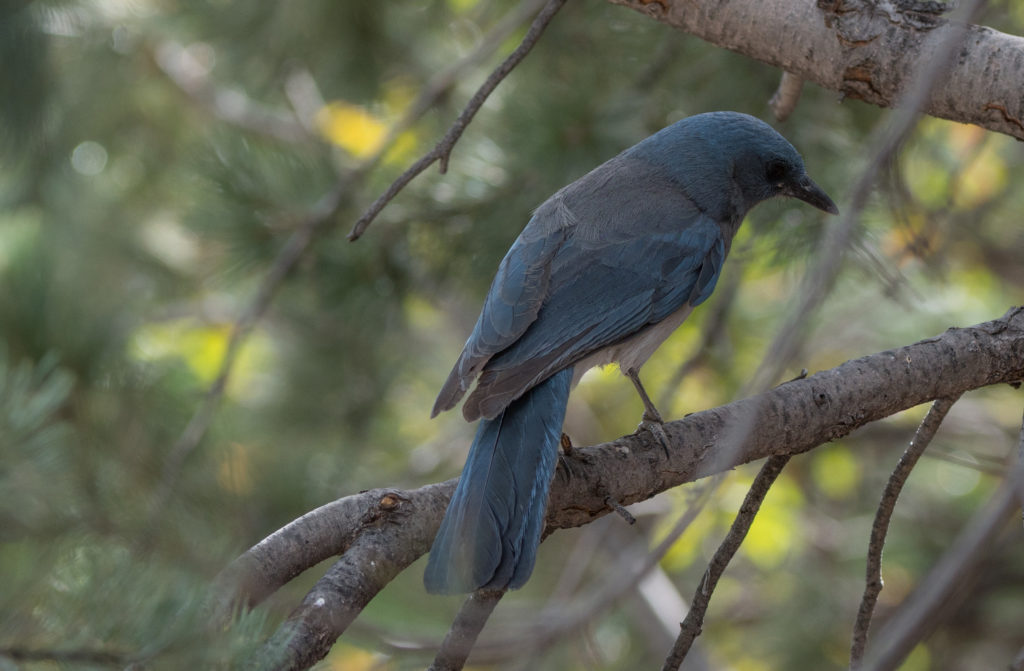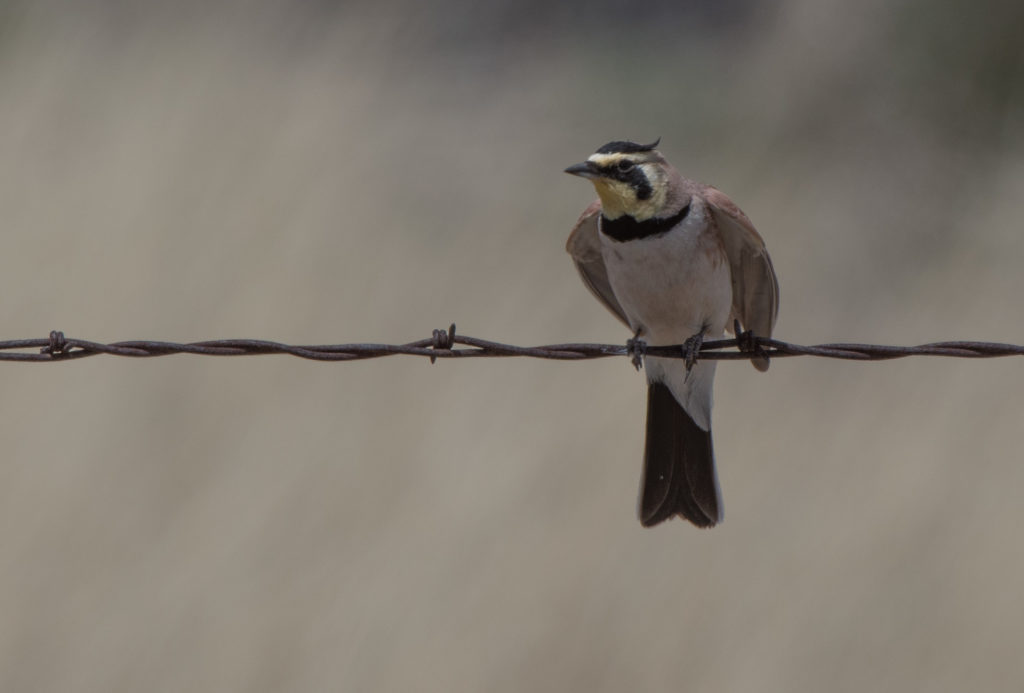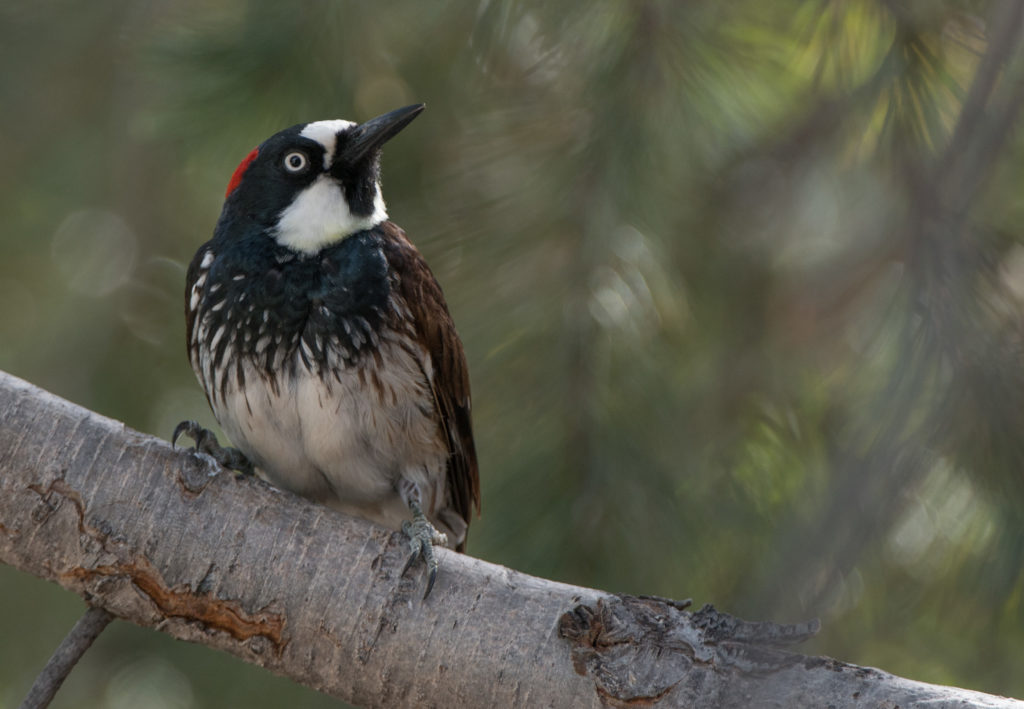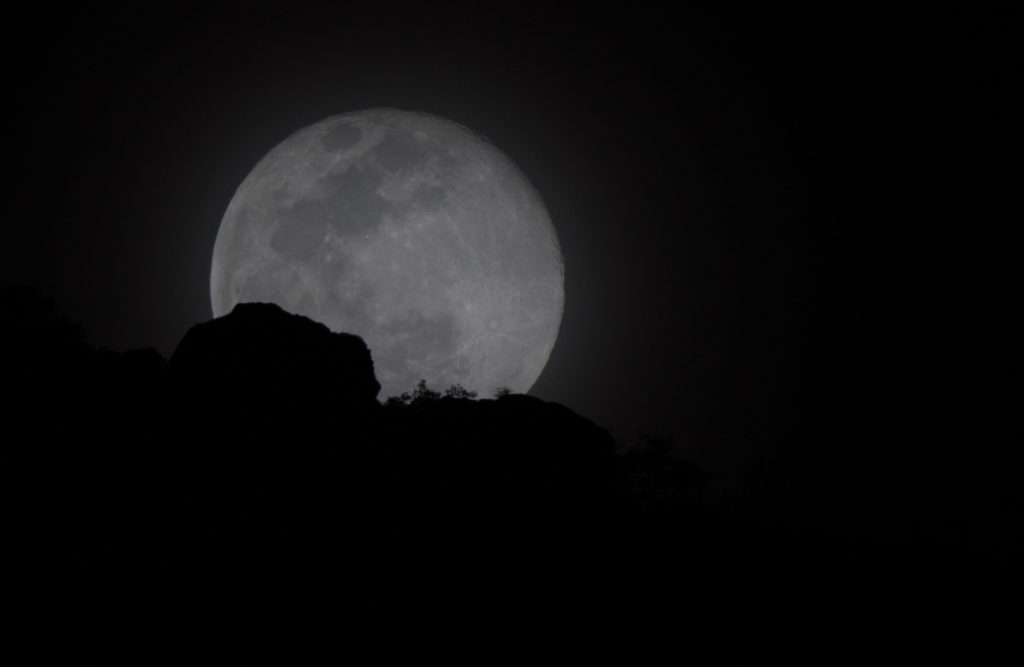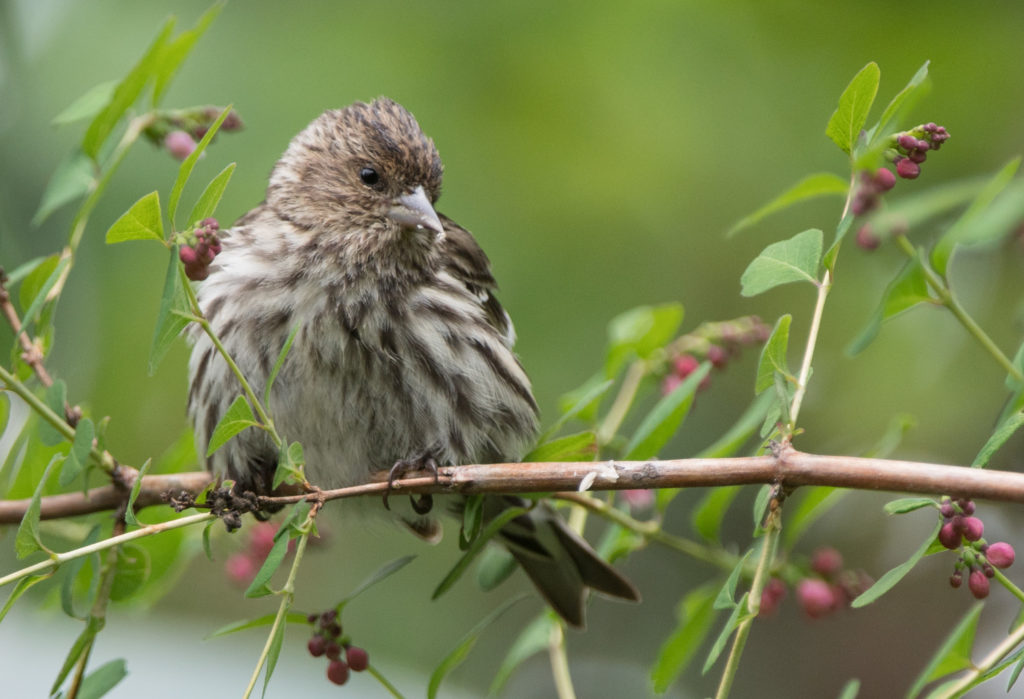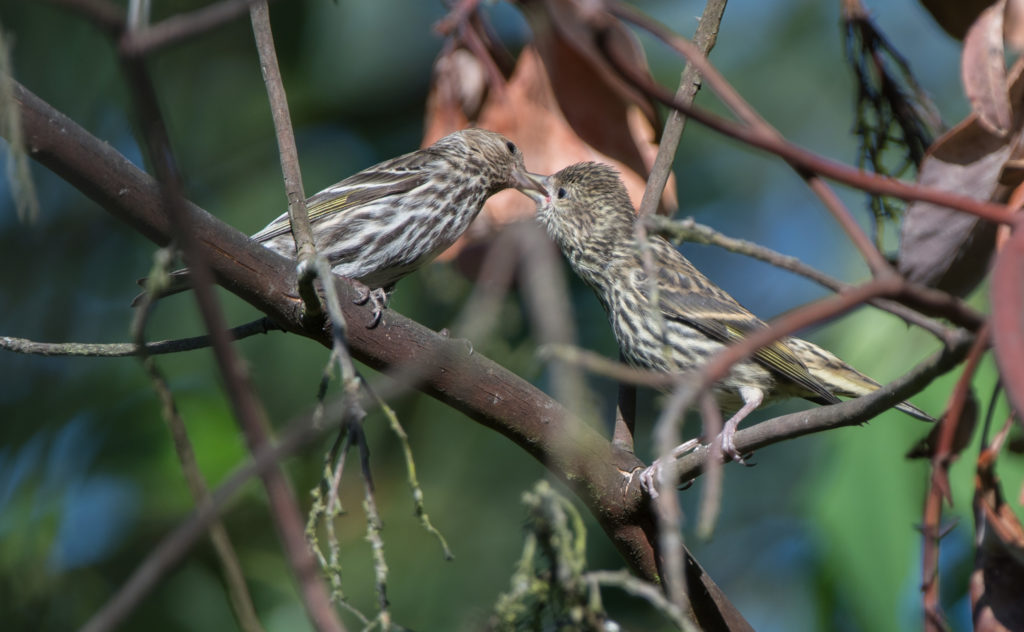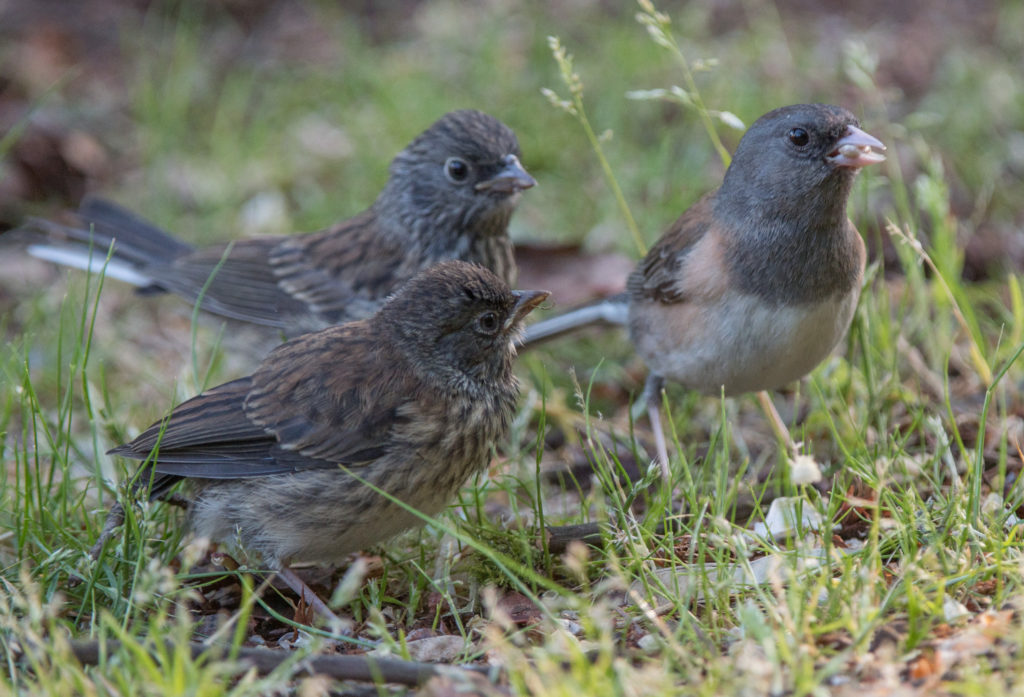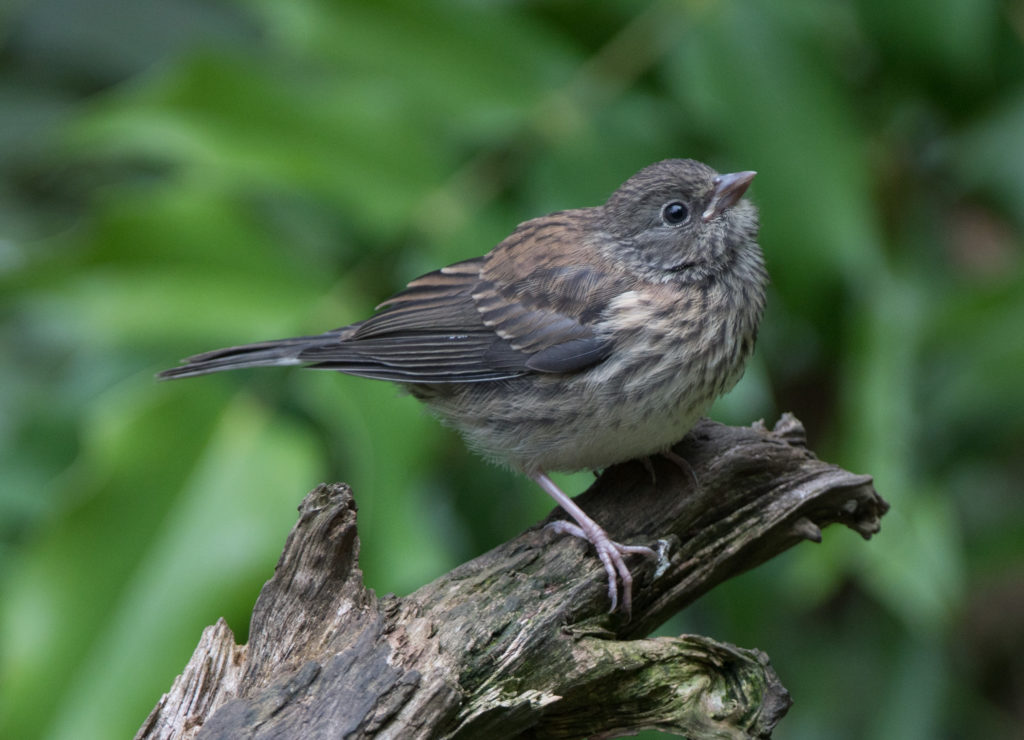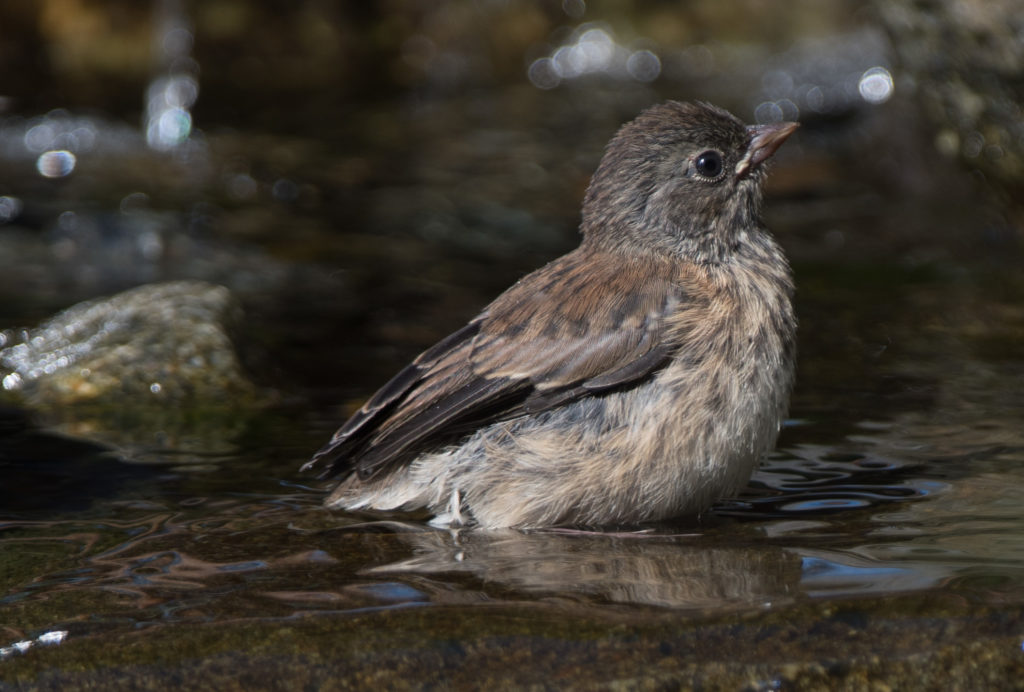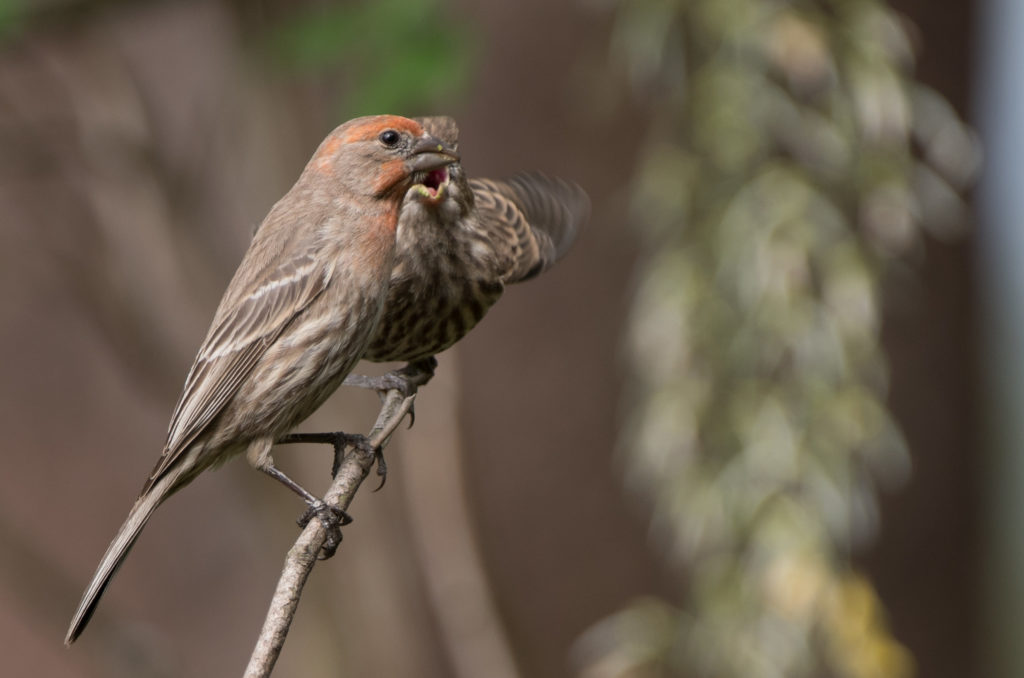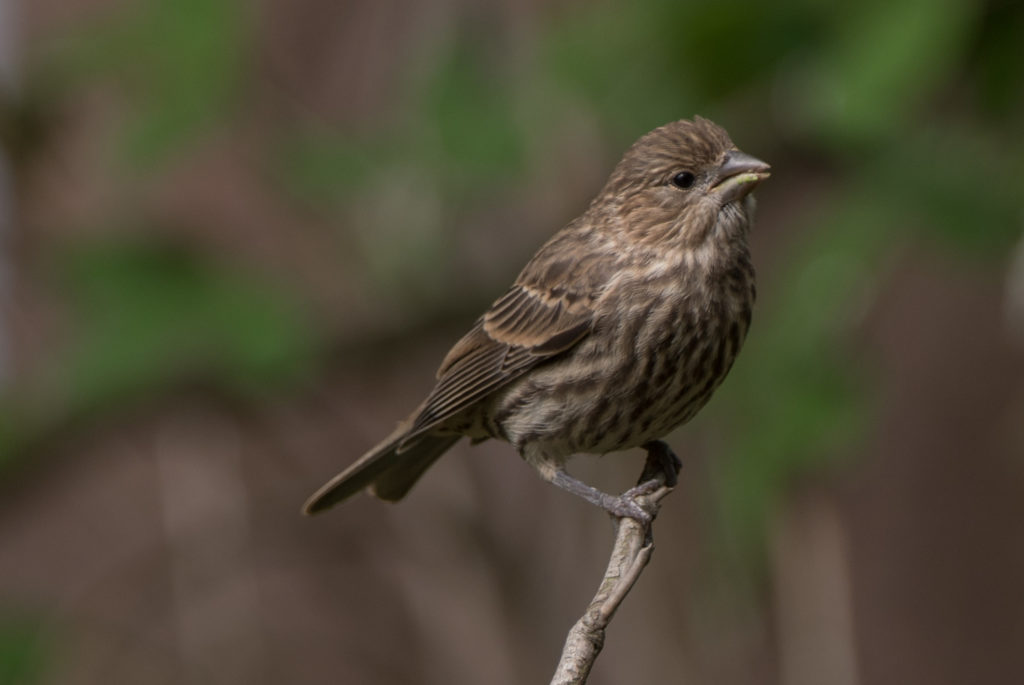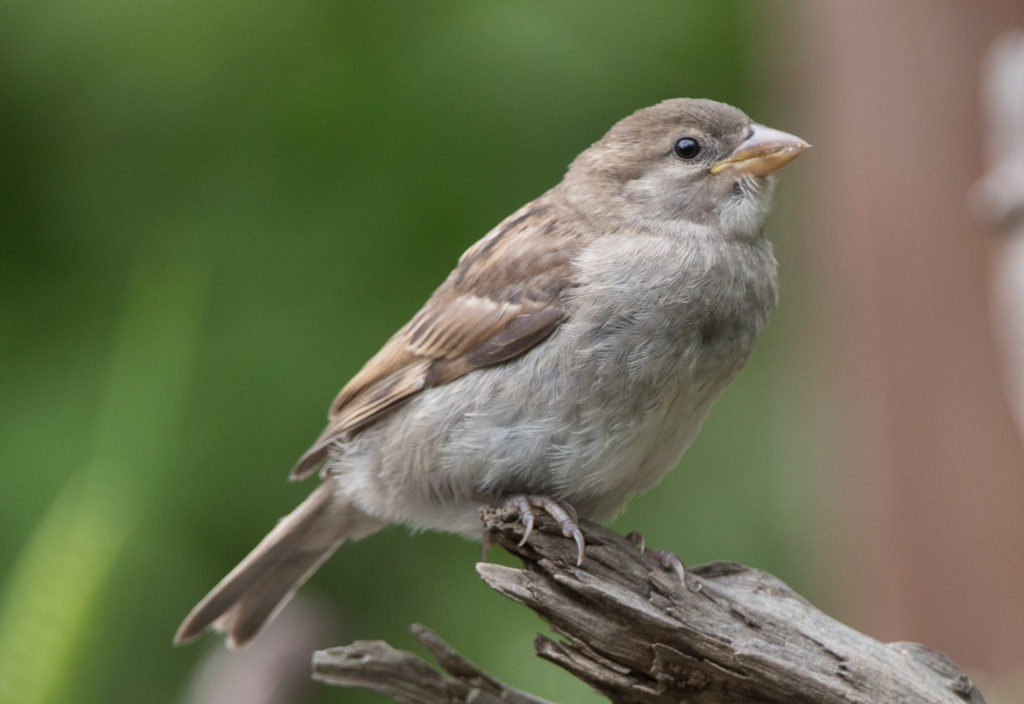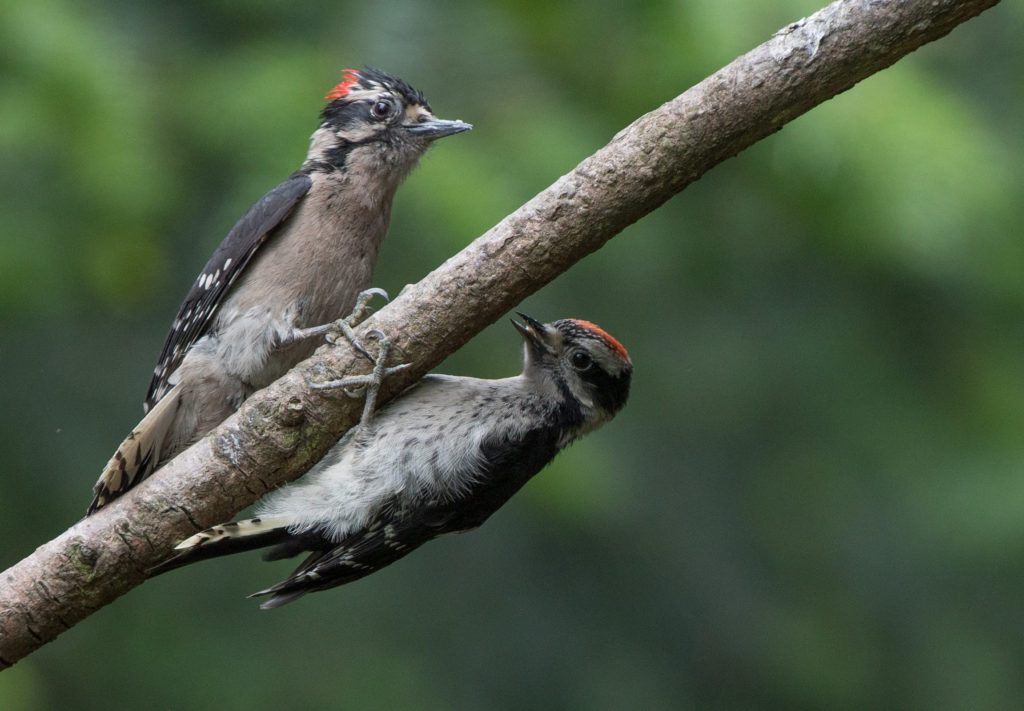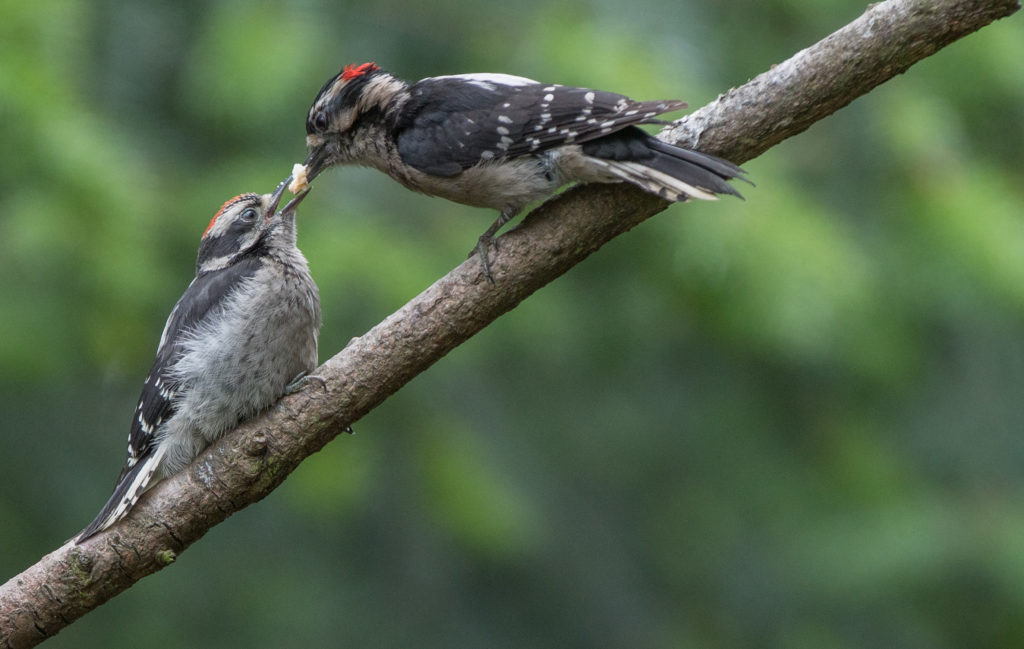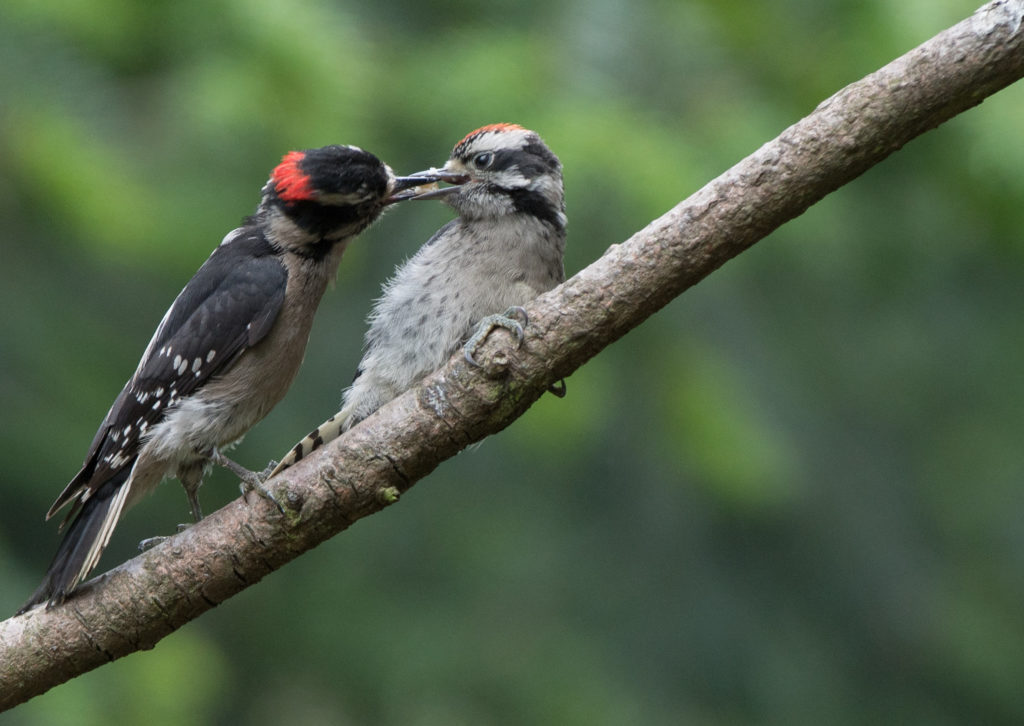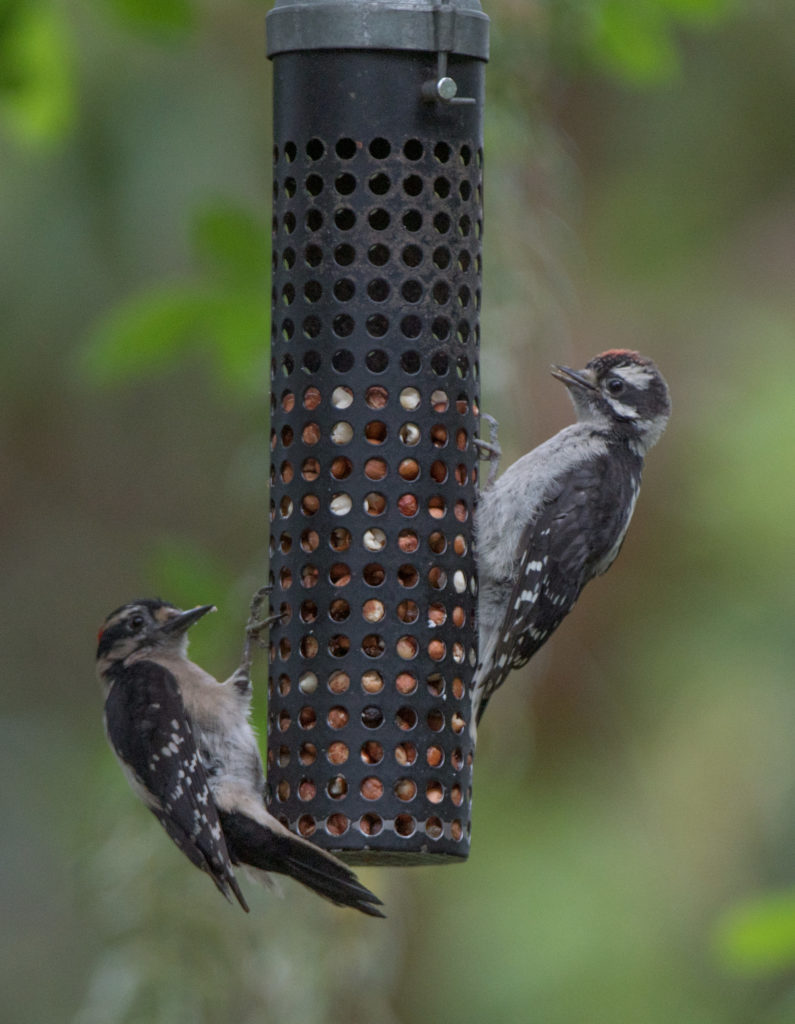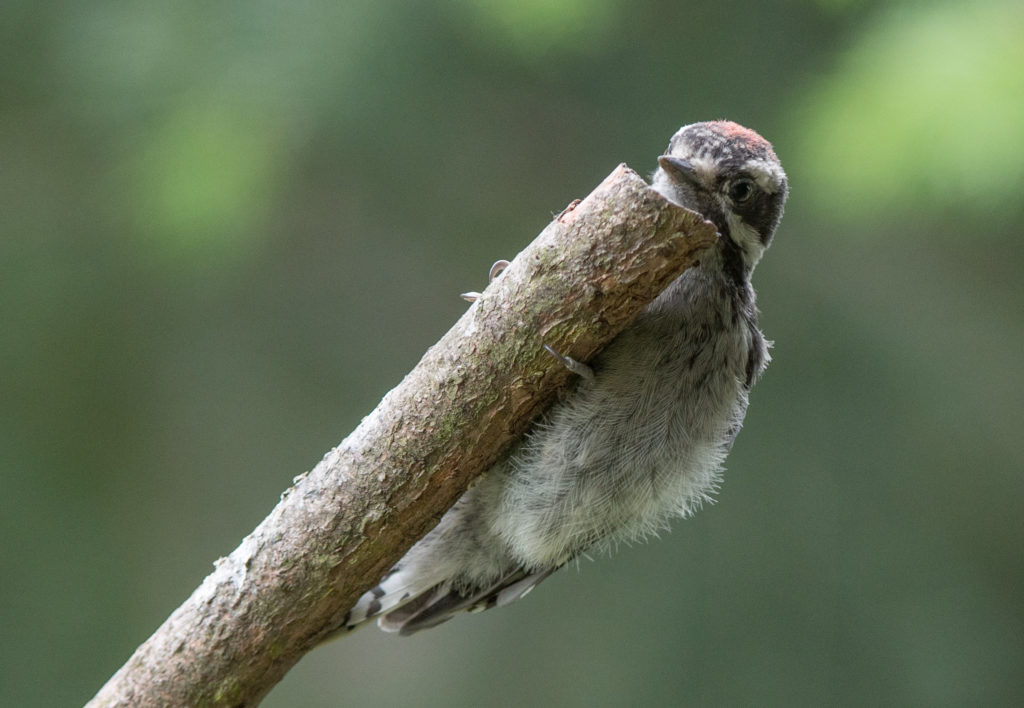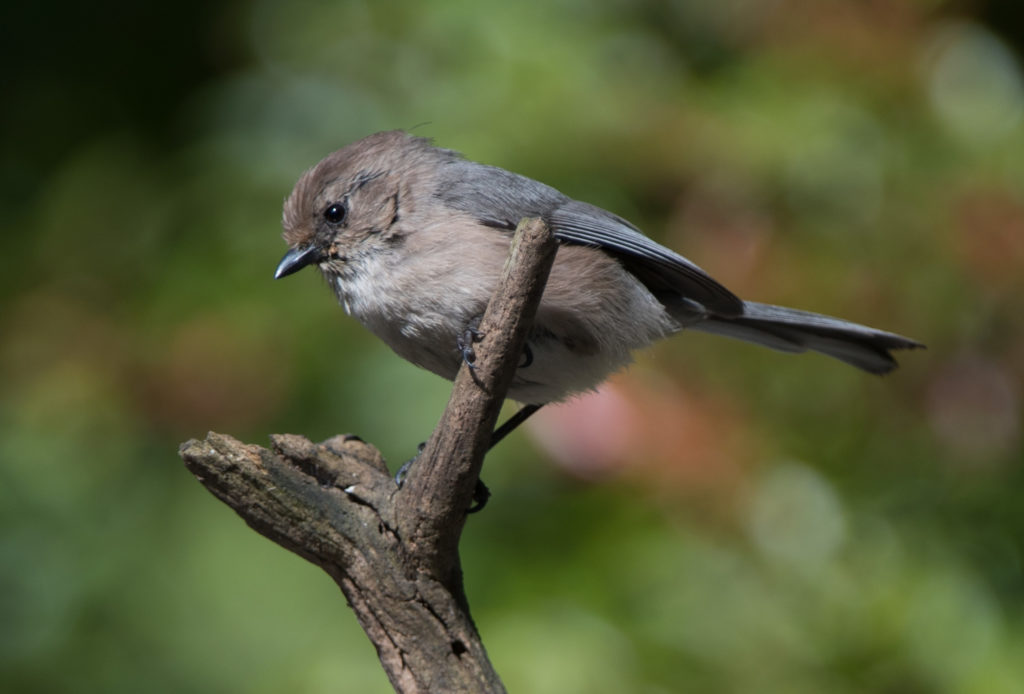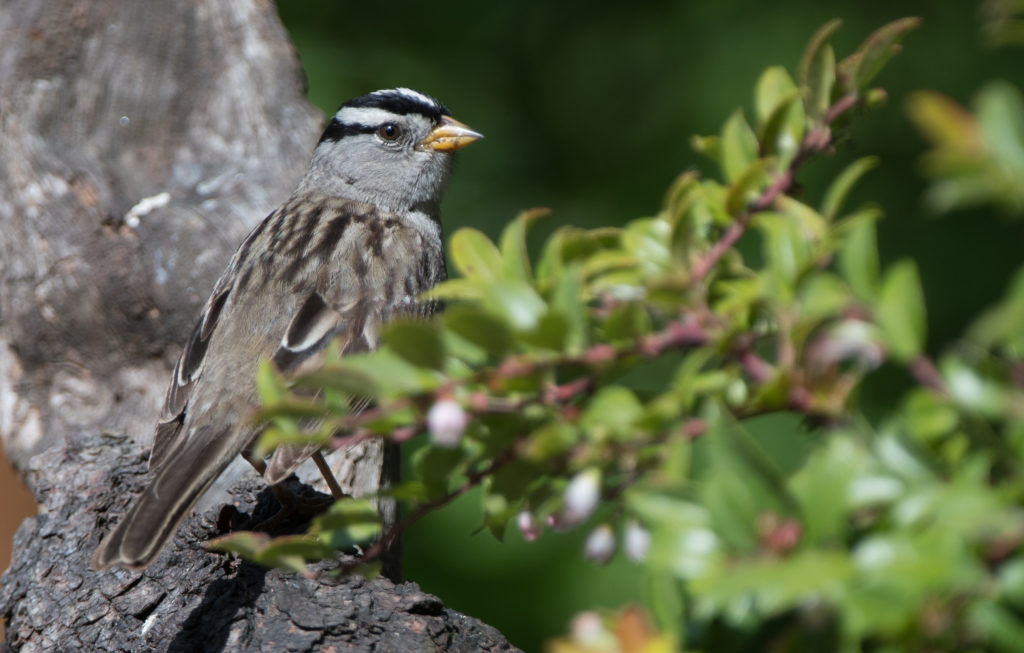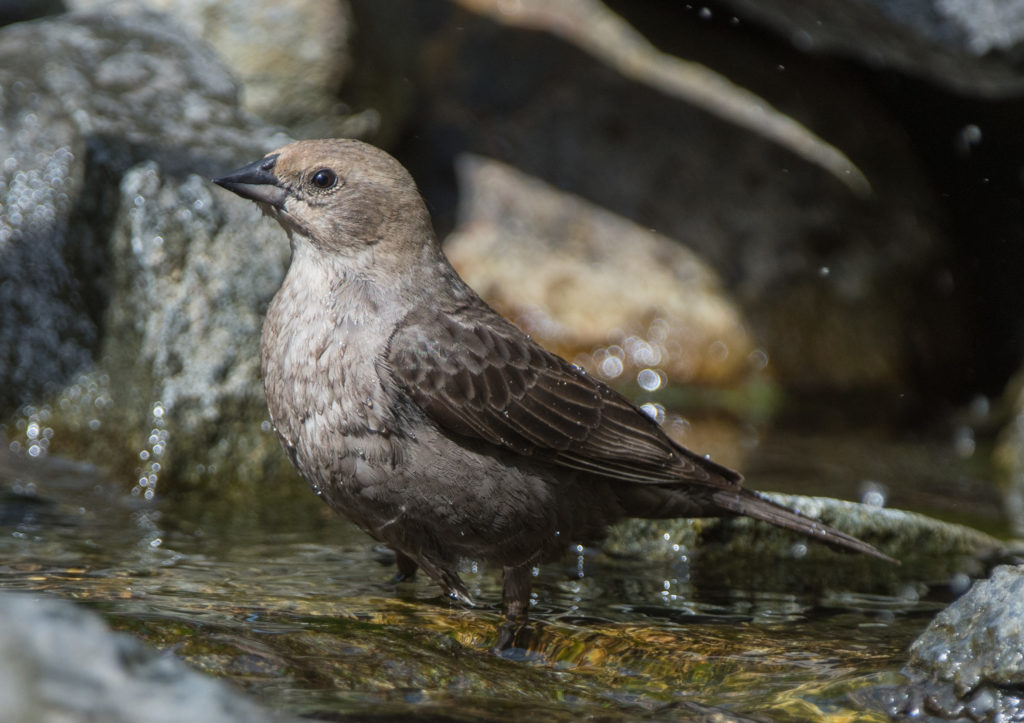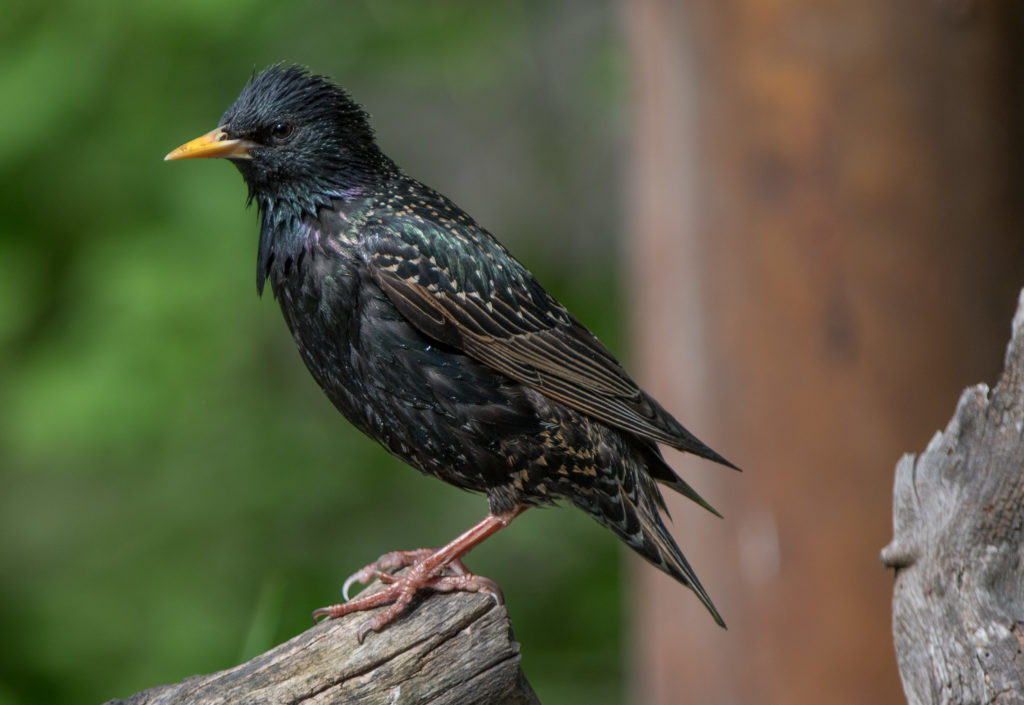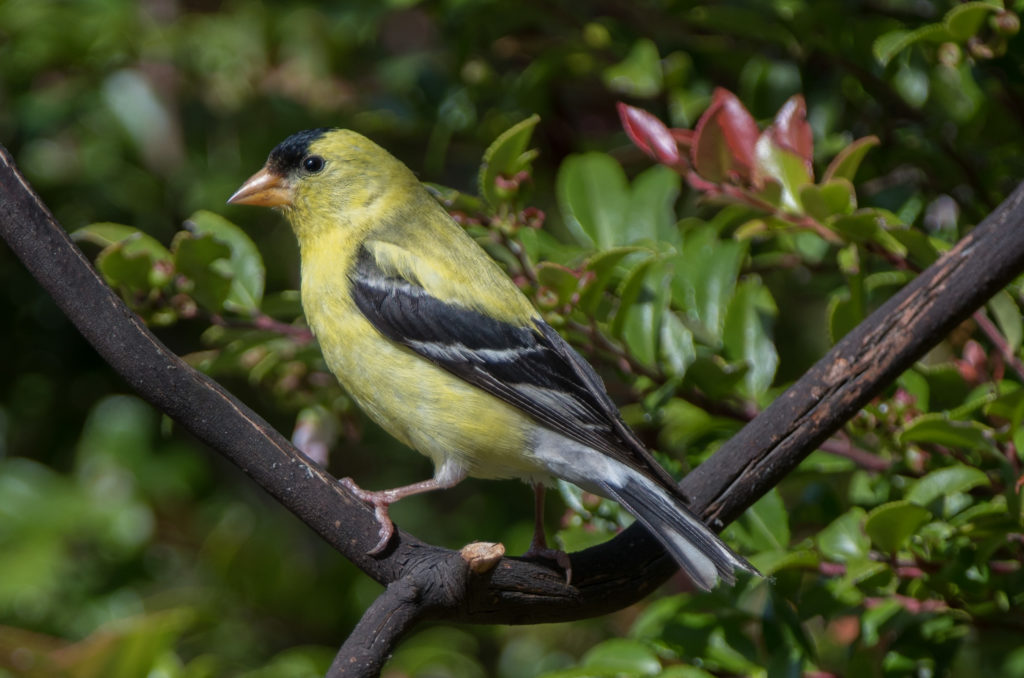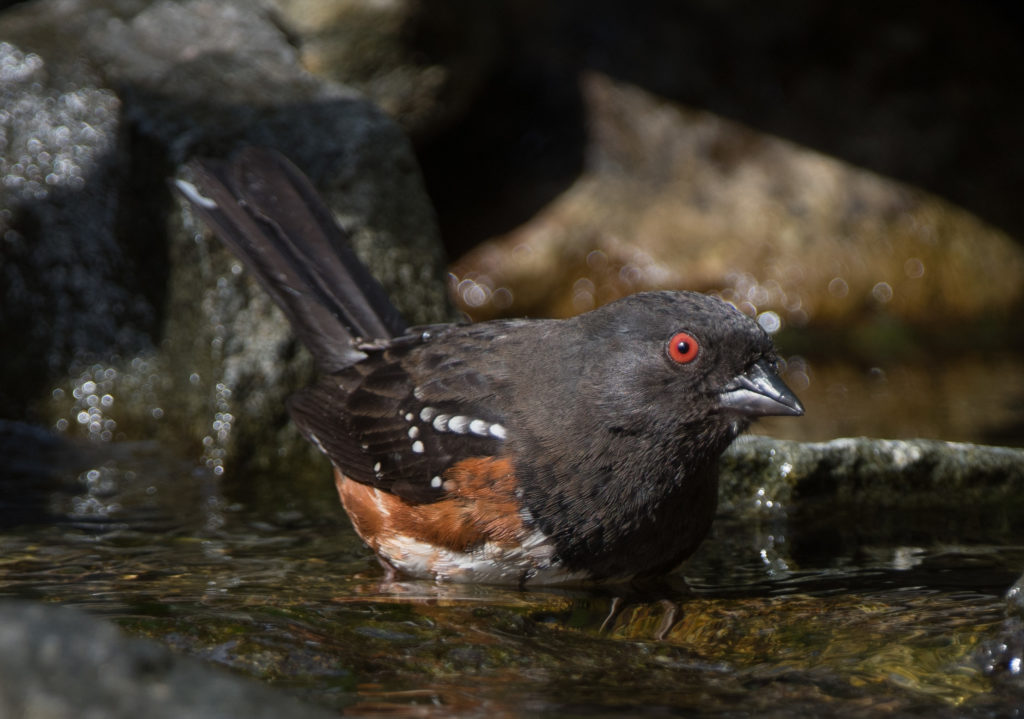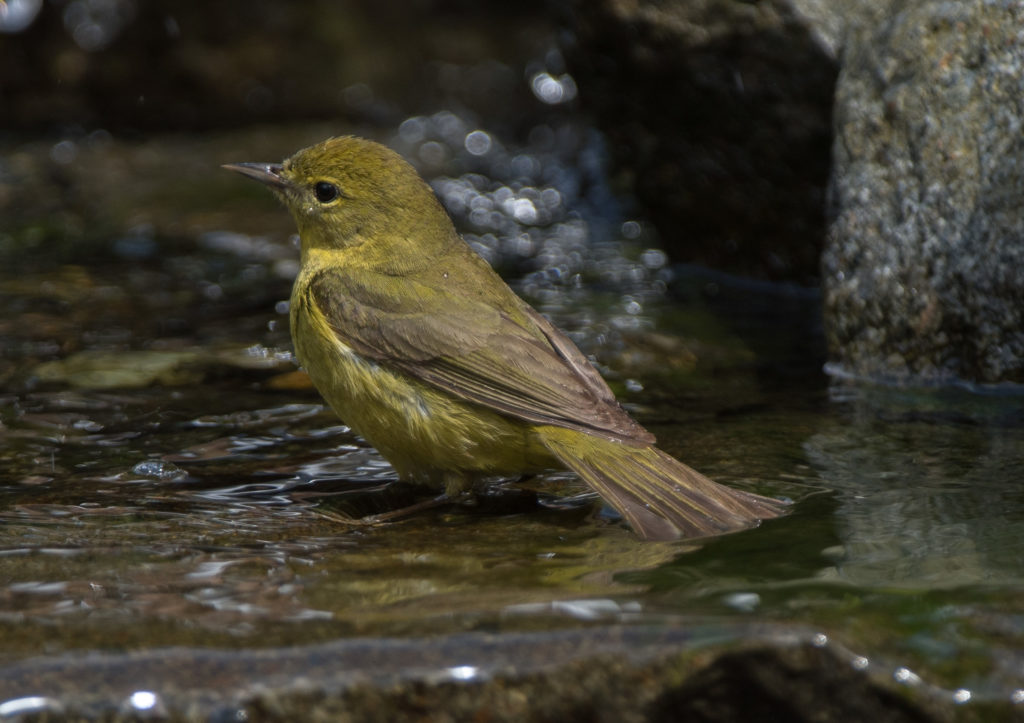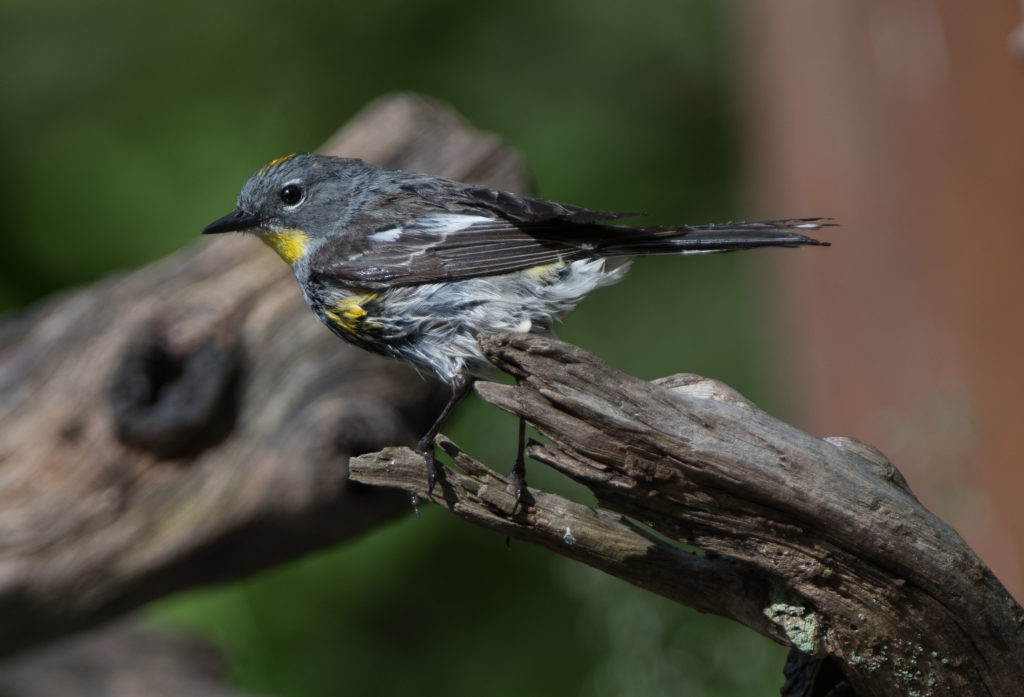A close call for my AZ continuity… on June 21 I had a pair of Cedar waxwings enter the yard and go to the watercourse. And, unlike most such incidents, I had time to retrieve my camera from the house and seat myself very near the watercourse. The waxwings chose not to linger on my staging sticks so I didn’t get the kind of photos I felt needed to be posted immediately, so I’m continuing with Arizona.
While in Portal I was made aware of a pair of Arizona woodpeckers‘ nest hole in a dead tree, so I staked it out with a considerable sacrifice of both time and comfort. I was rewarded with the parents making several trips to the nest that I was able to photograph. I was amazed that the adults could squeeze into the small nest hole, turn around inside and emerge head first. These photos are both of the male. (I believe that this woodpecker used to be known as the Strickland woodpecker.)
Here’s a photo of the woodpecker looking out the nest hole… 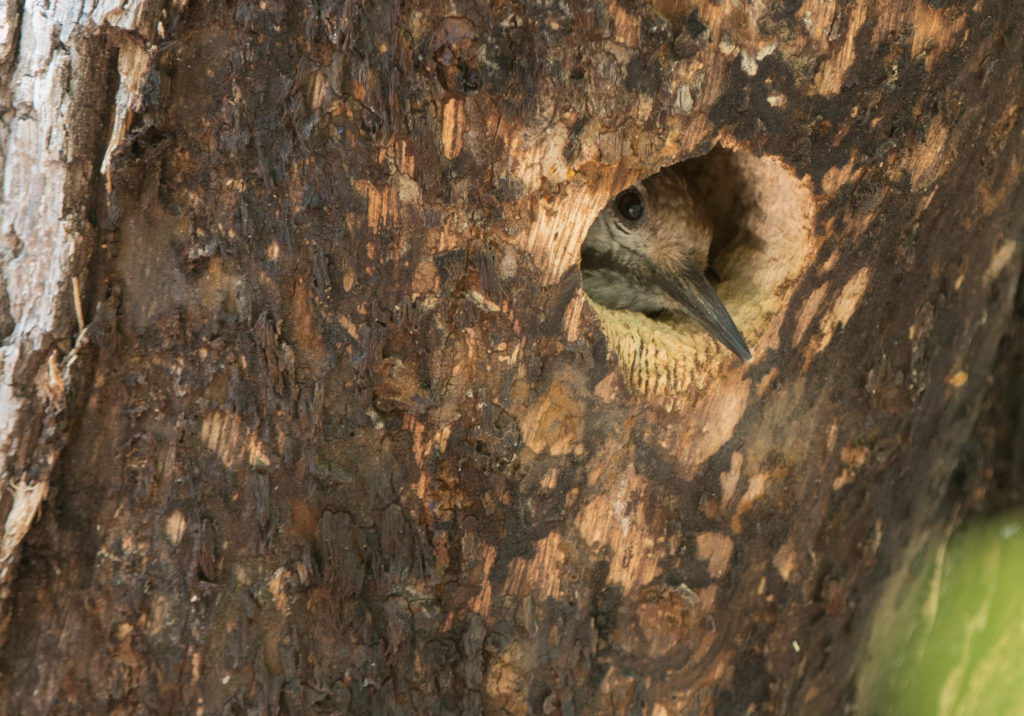
This is a photo of a Black-throated sparrow and I was very happy to get it. As it was we had several sightings and I was able to obtain several photos of a quality better than I had hoped.
I photographed this male Blue-throated hummingbird in the Portal, AZ area. It’s the largest hummingbird in North America.
This White-breasted nuthatch was in Madera Canyon back on the west side of the mountains.
In writing this blog, I have to have a field guide on my lap due to some unfamiliarity with some of the birds I photographed. This is especially true of this bird… a male Phainopepla, a striking flycatcher of the southwest deserts.
An unidentified female hummingbird feeding on a blooming ocotillo plant.
At our final destination in Tucson, a resort golf course, I was surprised to find a very habitable wildlife habitat. I discovered two Cactus wren nests, one of which is pictured here. I would have to say that this nest is about as safe from predators as nests can be made. I just wonder how many chicks are lost in fledging.

